The International Space Station (ISS) provides a platform for long-duration human space flights in low Earth orbit to conduct world-class research and to prepare for future exploration missions. But not all missions aboard ISS are long-duration ones. In the first few years of ISS on-orbit operations, expedition crews relied on the Space Shuttle for crew rotations, with a Soyuz spacecraft remaining docked at the station to serve as a lifeboat in case an emergency forced an immediate return to Earth. The Soyuz spacecraft’s 6-month on-orbit lifetime required its regular replacement during so-called “taxi” missions in which a crew would bring a fresh Soyuz to ISS and return to Earth a week or so later in the older Soyuz. These taxi missions opened up opportunities for professional astronauts as well as private citizen space flight participants (SFP) to complete short-duration visiting flights aboard ISS. During the hiatus of Shuttle flights in the wake of the Columbia accident, program managers reduced the ISS resident crew size to two, freeing up the third seat in the Soyuz now used for crew rotations for short-duration mission crewmembers. Until the crew complement on ISS expanded from three to six in 2009, the third seat in the Soyuz remained available for SFPs as well as for professional astronauts from ISS partner space agencies. Between 2001 and 2009, the Virginia-based company Space Adventures, Inc., arranged for eight flights of seven private citizens (one of whom made two flights) to ISS through contracts with the Russian federal space agency. In addition, four international citizens completed short ISS visits using agreements between their governments and the Russian Federation.

Summary of Space Flight Participant missions to ISS.
American engineer and businessman Dennis A. Tito holds the title as the first paying private citizen to make an orbital journey. He launched aboard Soyuz TM32 on April 28, 2001, together with Russian cosmonaut Talgat A. Musabayev and Russian politician Yuri M. Baturin, during the first Soyuz taxi mission of the ISS program. They docked with ISS one day after Space Shuttle Endeavour undocked following that crew’s delivery of the Canadarm2 robotic arm to the station, making it a very busy time for the resident Expedition 2 crew of Yuri V. Usachev, James S. Voss and Susan J. Helms. Officially designated as Cosmonaut Researchers, Tito and his two crewmates spent six days aboard ISS, conducting life sciences and biotechnology experiments and photographing selected targets of interest on Earth. They returned to Earth on May 6 aboard Soyuz TM31, the spacecraft that six months earlier had delivered William M. Shepherd, Yuri P. Gidzenko and Sergei K. Krikalev as the first crew to live aboard ISS.
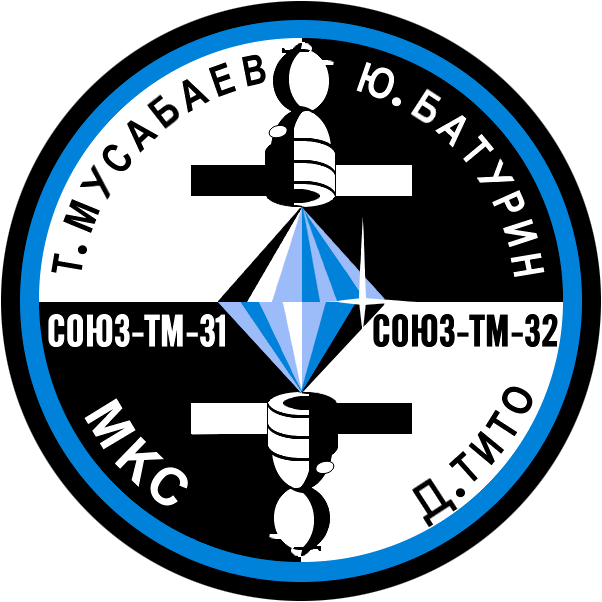
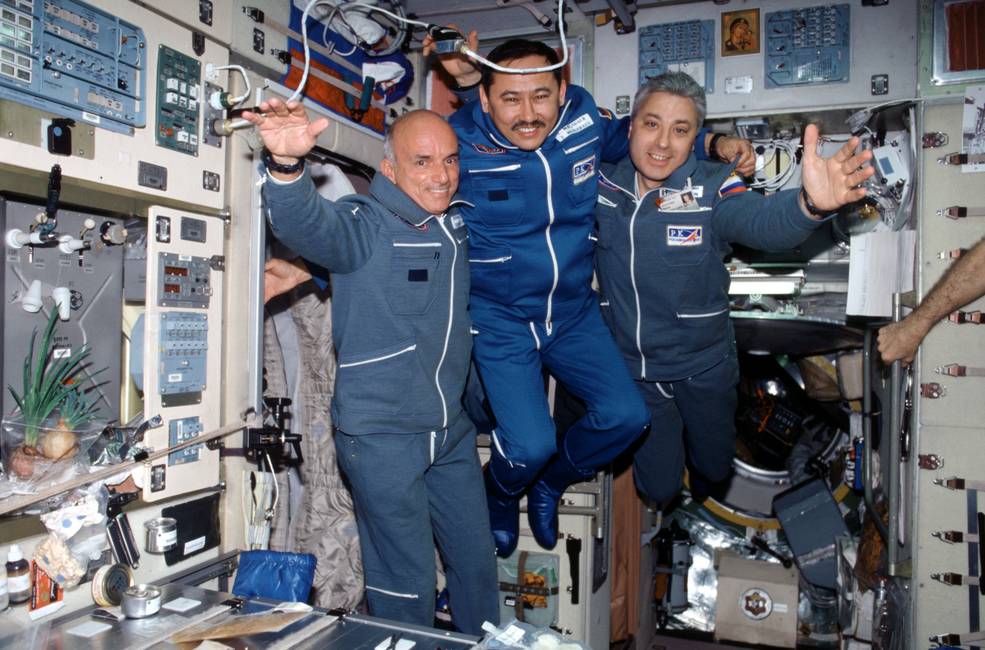
Left: First Soyuz taxi mission patch.
Right: SFP Tito (left) with Soyuz TM32 crewmates Musabayev (middle) and Baturin.
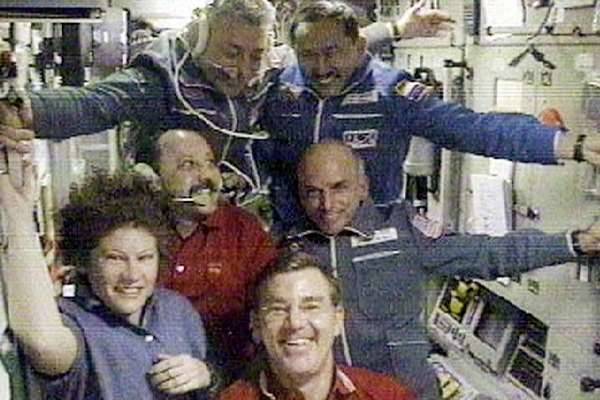
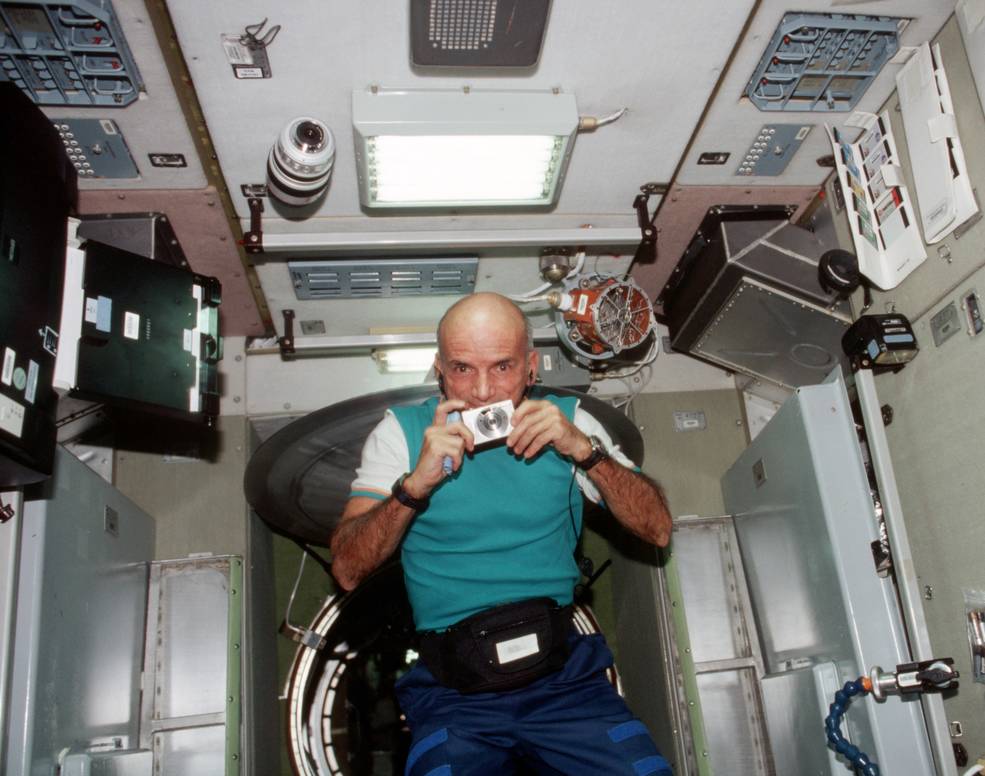
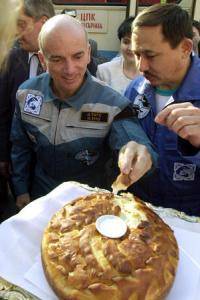
Left: Tito (second row, at right) with his Soyuz taxi and ISS Expedition 2 crewmates.
Middle: Tito playing the space tourist. Right: Tito (left) and Musabayev accepting the
traditional Russian welcome of bread and salt upon their return to Star City.
The title of second SFP belongs to entrepreneur Mark R. Shuttleworth, who also holds the title as the first South African in space. He launched aboard Soyuz TM34 on April 24, 2002, with Russian cosmonaut Yuri P. Gideznko and Roberto Vittori, an Italian Space Agency (ASI) astronaut whose flight was arranged via a contract between ASI and the Russian federal space agency. They docked with ISS two days later, joining the Expedition 4 crew of Yuri I. Onufriyenko, Carl E. Walz and Daniel W. Bursch onboard. Shuttleworth conducted a series of experiments using Russian equipment already present on ISS as well as four South African university developed experiments, including a stem cell investigation to which he contributed saliva samples. After eight days aboard ISS, the trio returned to Earth aboard the Soyuz TM33 spacecraft.
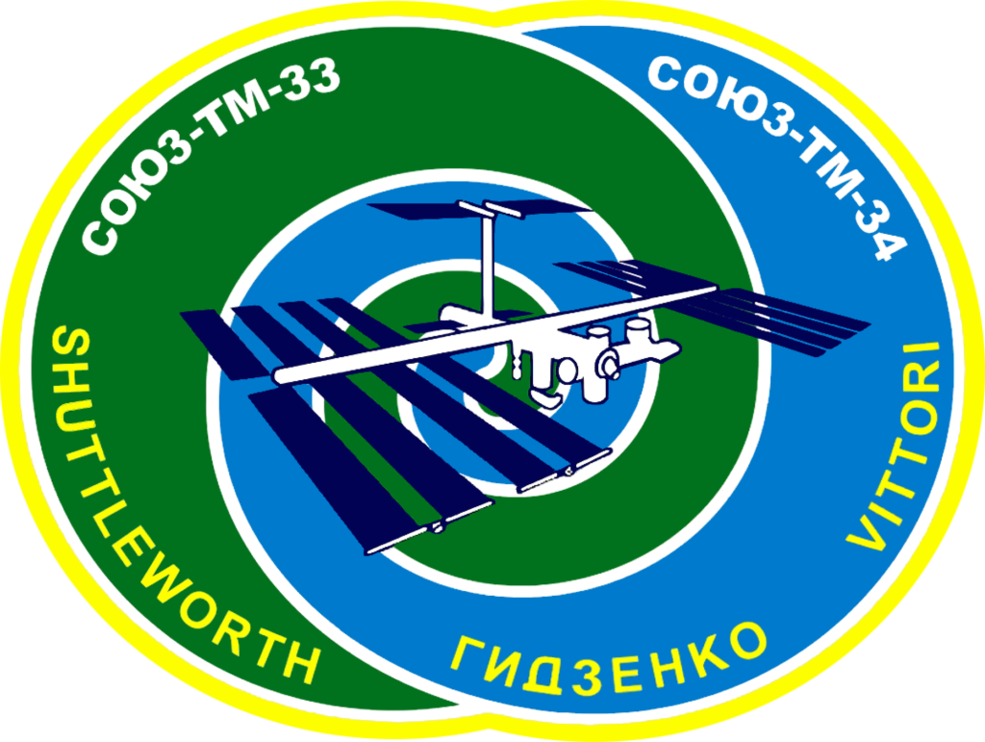
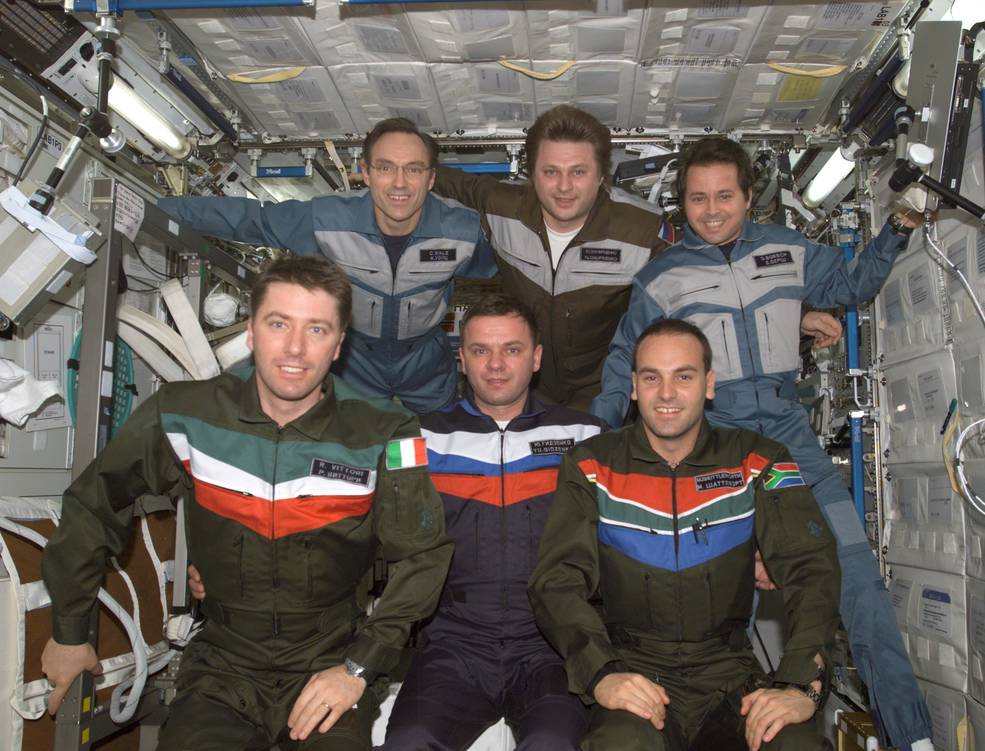
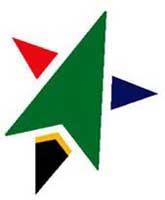
Left: Third Soyuz taxi mission patch: Middle: SFP Shuttleworth (front row, at right) with his taxi and ISS Expedition 4 crewmates. Right: Shuttleworth’s mission emblem channeling the colors of the South African flag.
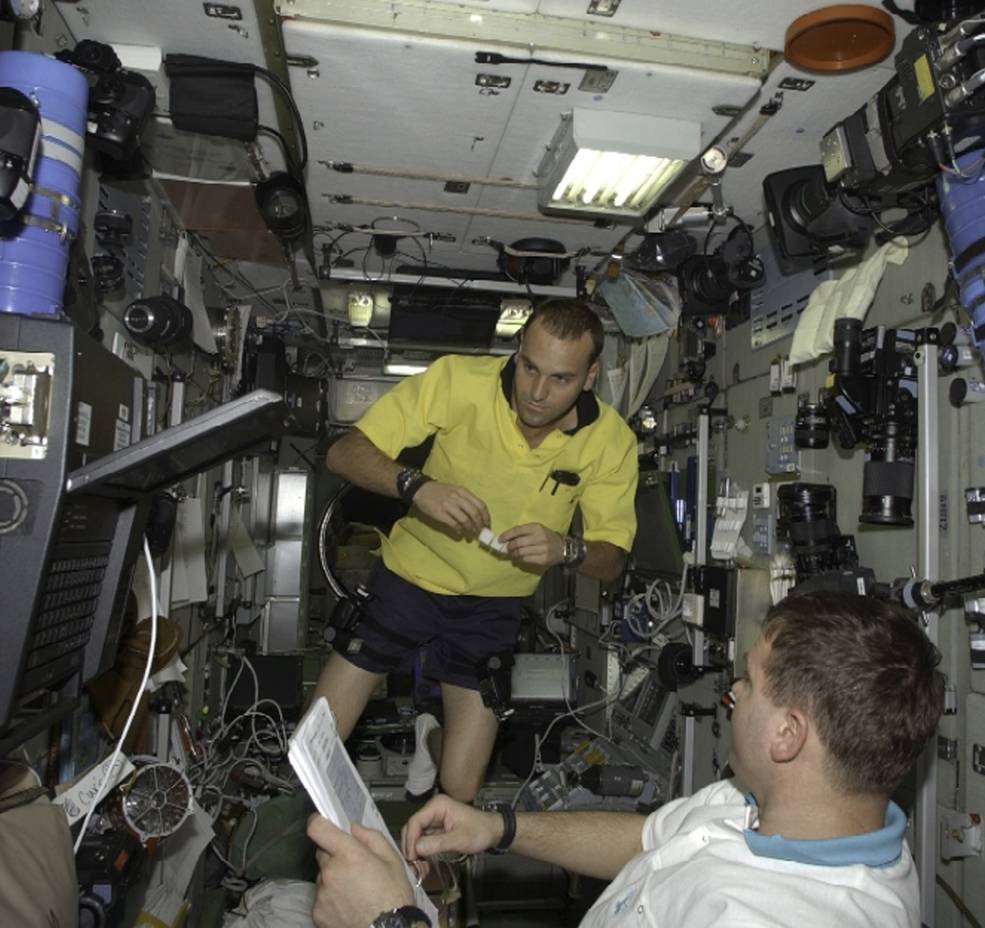
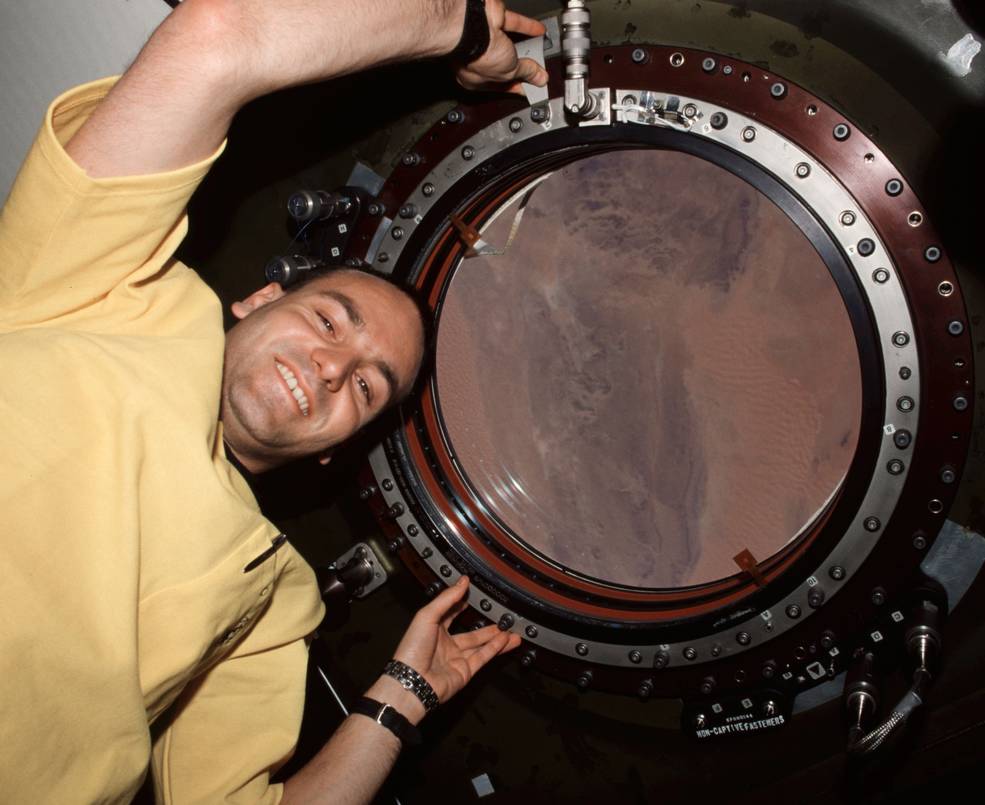
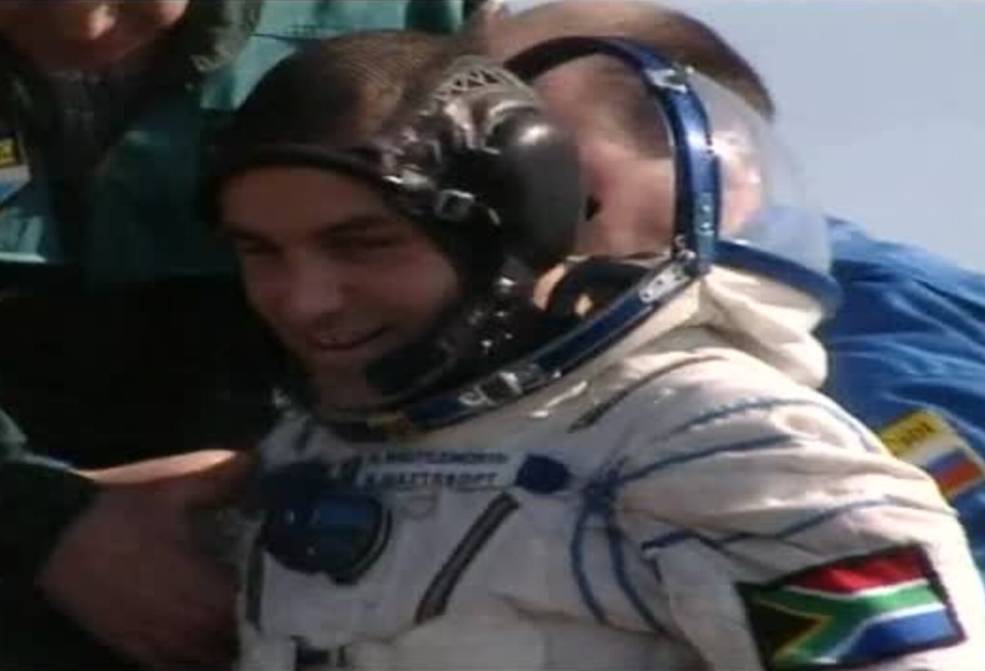
Left: Shuttleworth (left) with Gidzenko working on an experiment. Middle: Shuttleworth at the Destiny module’s optical quality window. Right: Shuttleworth minutes after landing back on Earth.
A three-year lull in SFP missions followed Shuttleworth’s flight, as four European Space Agency (ESA) astronauts and a Russian Military Space Forces cosmonaut took up the next five Soyuz third seats. Gregory H. Olsen, an American entrepreneur, engineer and scientist, became the third SFP when he launched aboard Soyuz TMA-7 on October 1, 2005, with the ISS Expedition 12 crew of William S. McArthur and Valeri I. Tokarev. During his eight days aboard the station, Olsen carried out experiments for ESA, conducted three live video and amateur radio sessions with schools and took photographs of the Earth. Olsen returned home aboard Soyuz TMA-6 with the ISS Expedition 11 crew of Sergei K. Krikalev and John L. Phillips, leaving a fresh Soyuz docked to ISS.
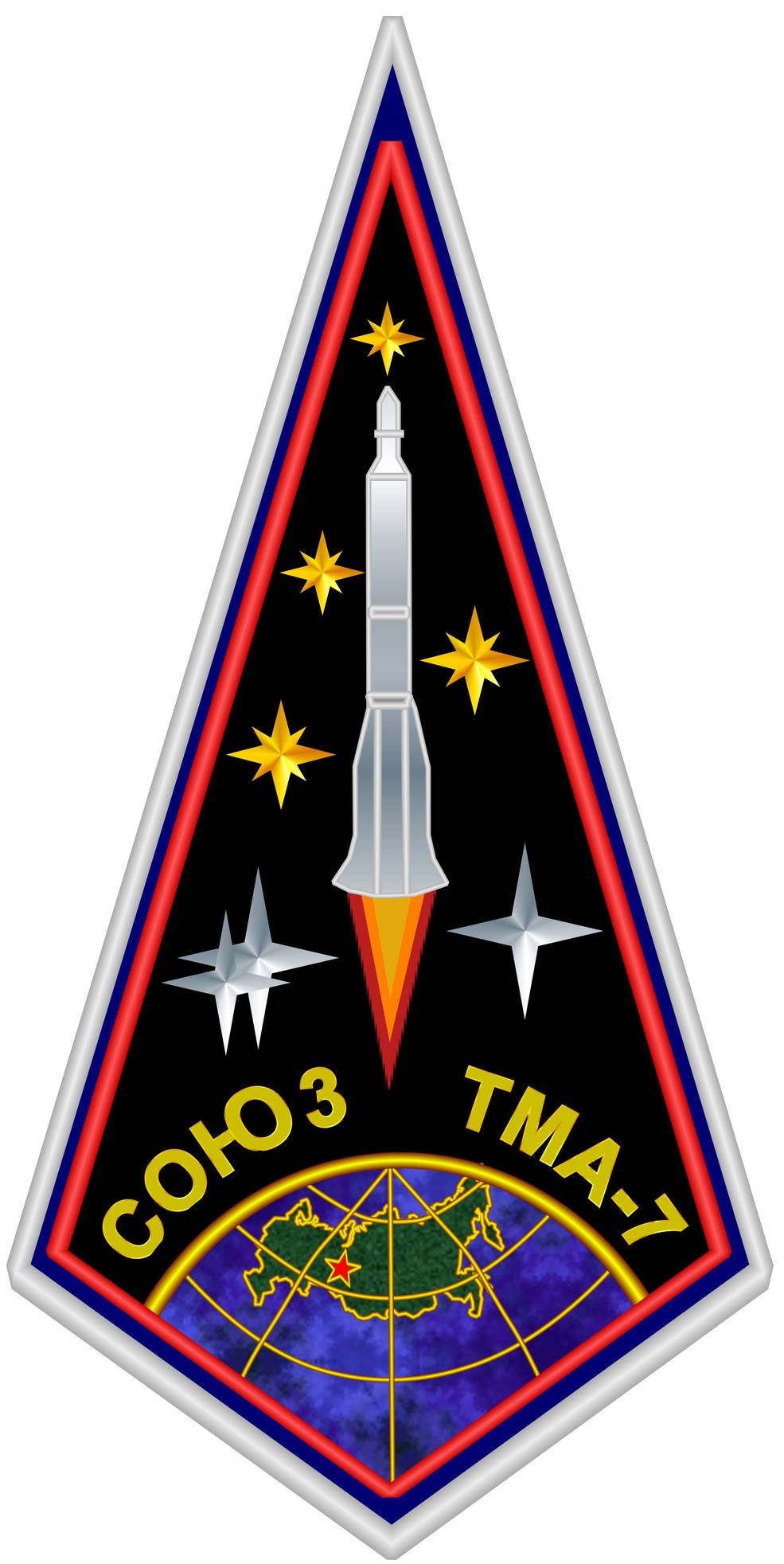
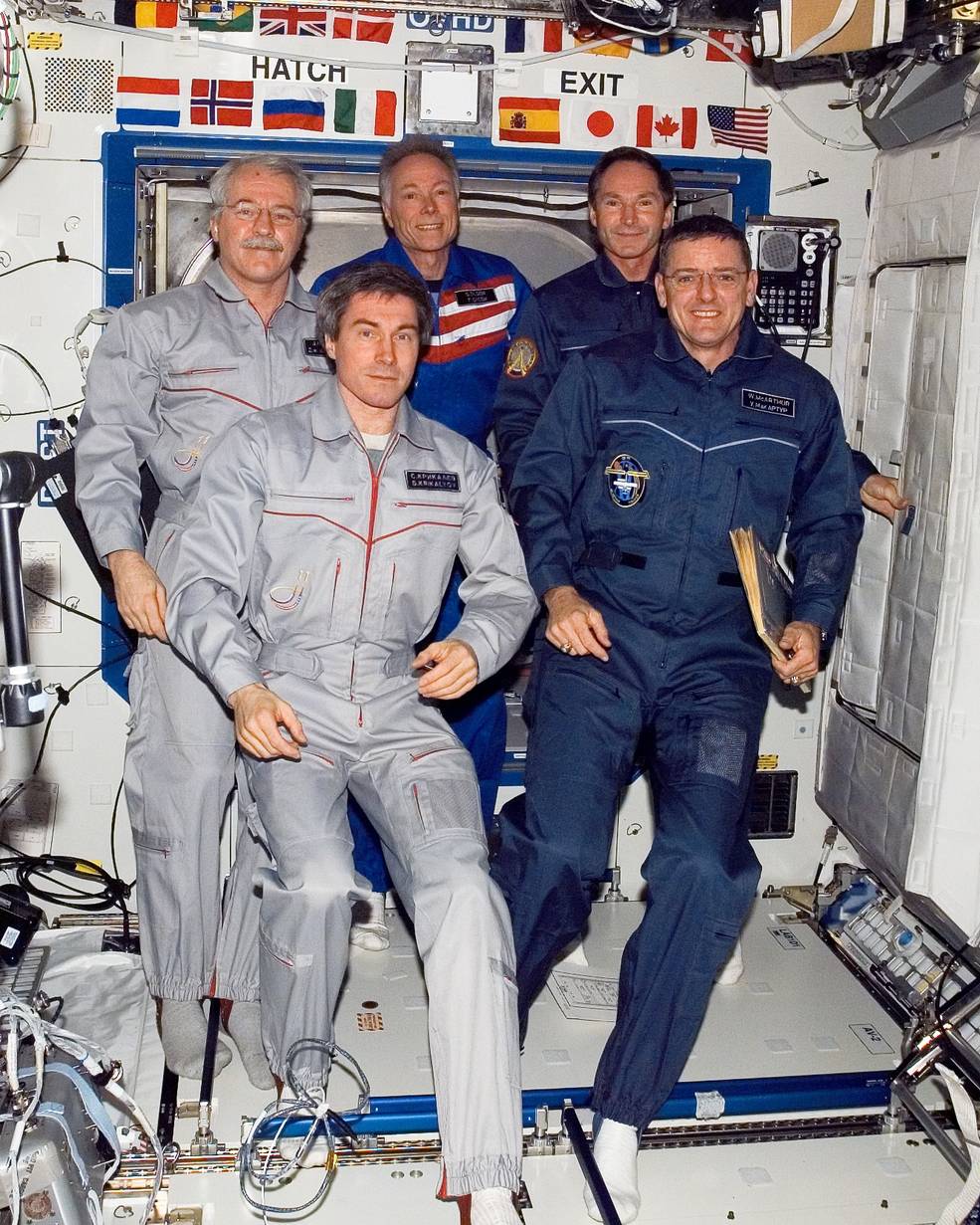
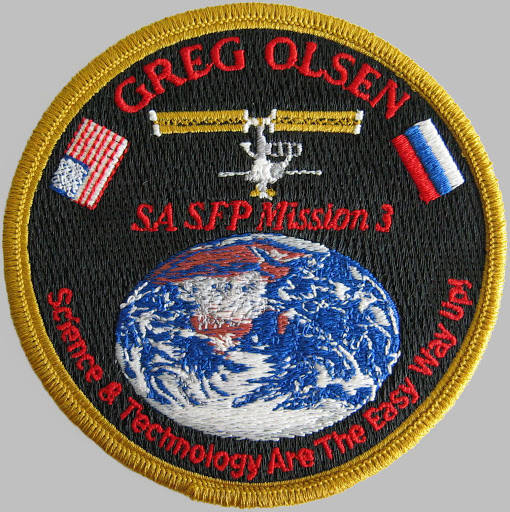
Left: Soyuz TMA-7 patch. Middle: SFP Olsen (back row, middle) with his Expedition 11 and 12 crewmates. Right: Olsen’s mission patch.
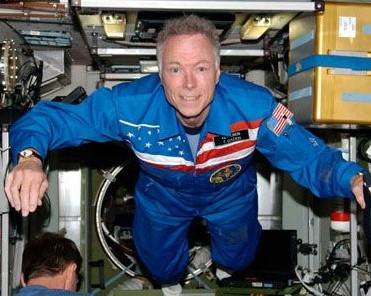
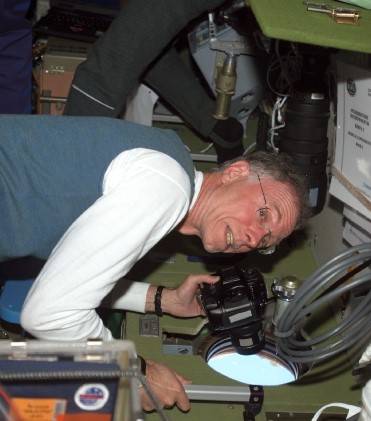
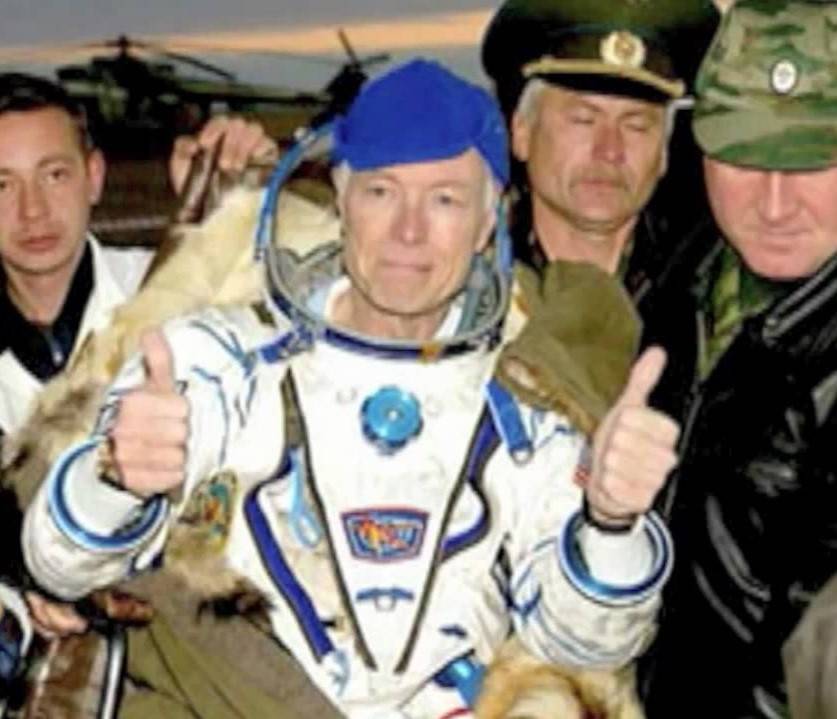
Left: Olsen floating through the Zvezda module. Middle: Olsen taking Earth photographs through a window in the Zvezda module. Right: Recovery team members carry Olsen from the Soyuz spacecraft to the medical tent at the landing site.
The next SFP mission resulted from a commercial agreement between the Brazilian Space Agency (AEB) and the Russian federal space agency. The astronaut chosen for the mission, Marcos C. Pontes, had been selected in the 1998 NASA Astronaut Class and had qualified as a Space Shuttle Mission Specialist. The timing of Pontes’ mission coincided with the 100th anniversary of the first flight of a Brazilian aviation pioneer, so AEB named his flight Missão Centenário. Pontes launched aboard Soyuz TMA-8 on March 30, 2006, becoming the first Brazilian in space, together with ISS Expedition 13 crewmembers Pavel V. Vinogradov and Jeffrey N. Williams. During his eight days aboard ISS, Pontes conducted eight science, technology and education experiments. He returned to Earth on April 9 with the ISS Expedition 12 crew of McArthur and Tokarev.
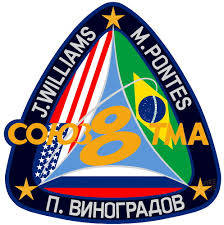
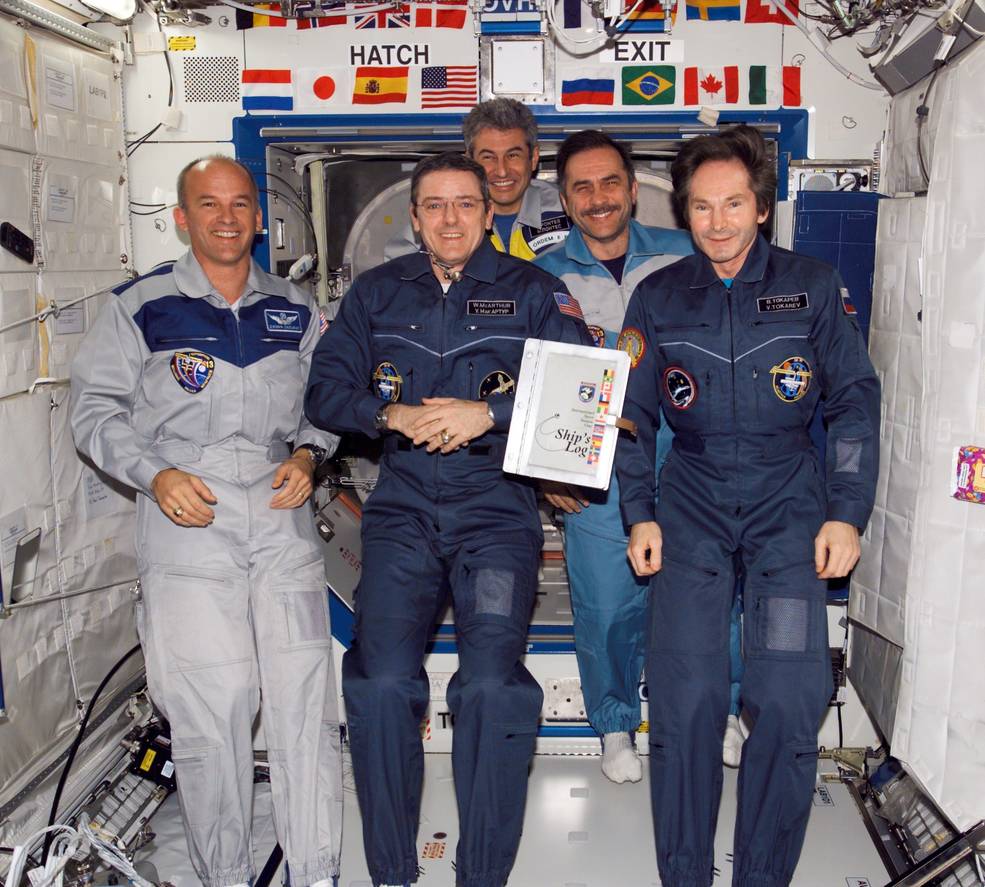
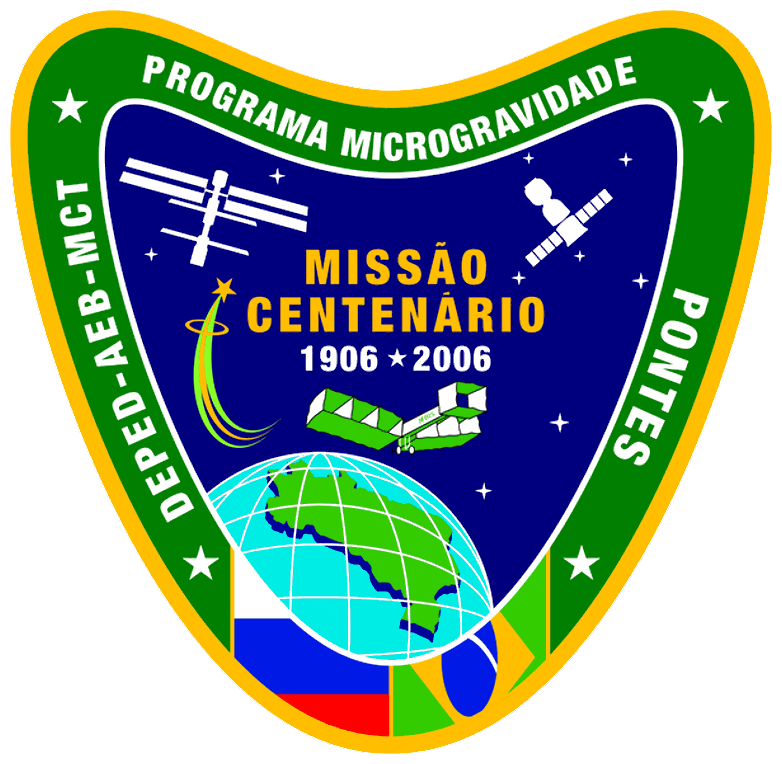
Left: Soyuz TMA-8 patch. Middle: SFP Pontes (in back) with his Expedition 12 and 13 crewmates. Right: Pontes’ Missão Centenário patch.
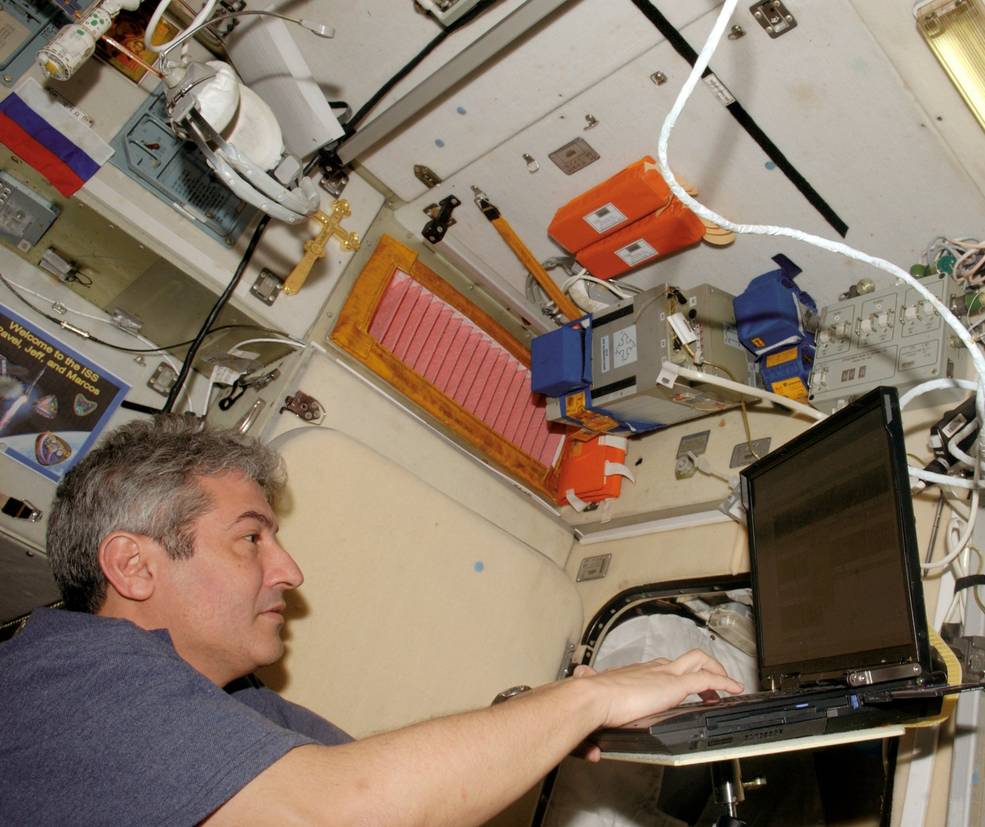
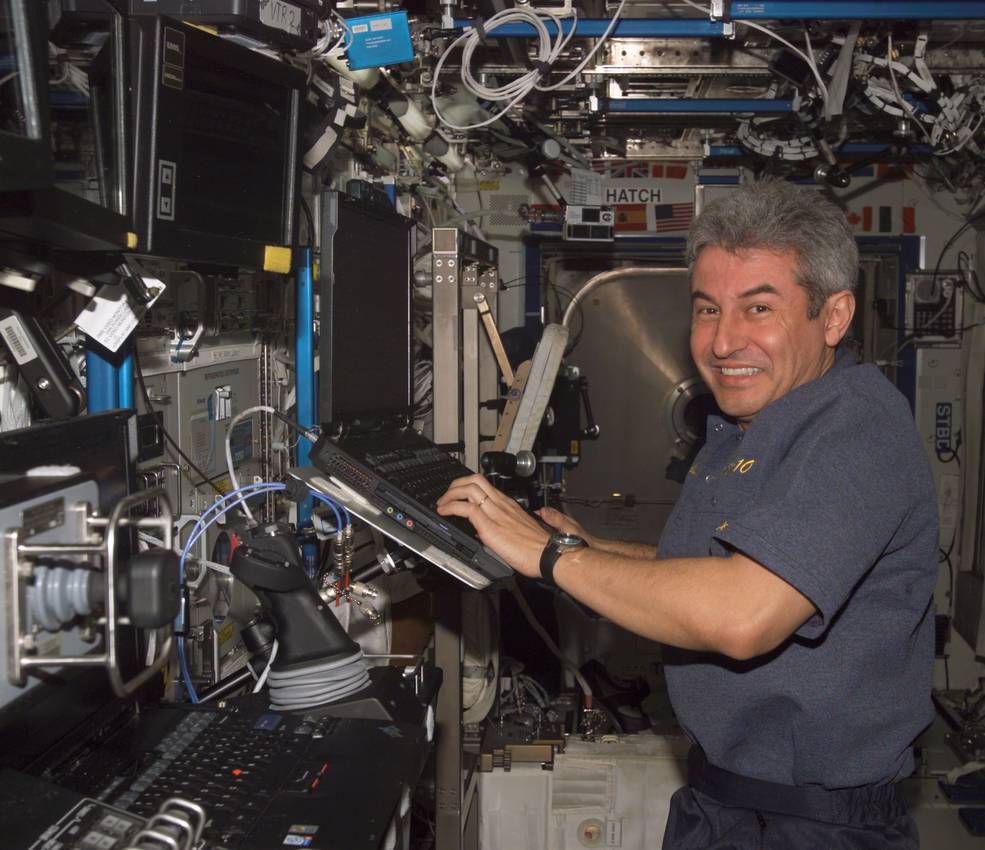
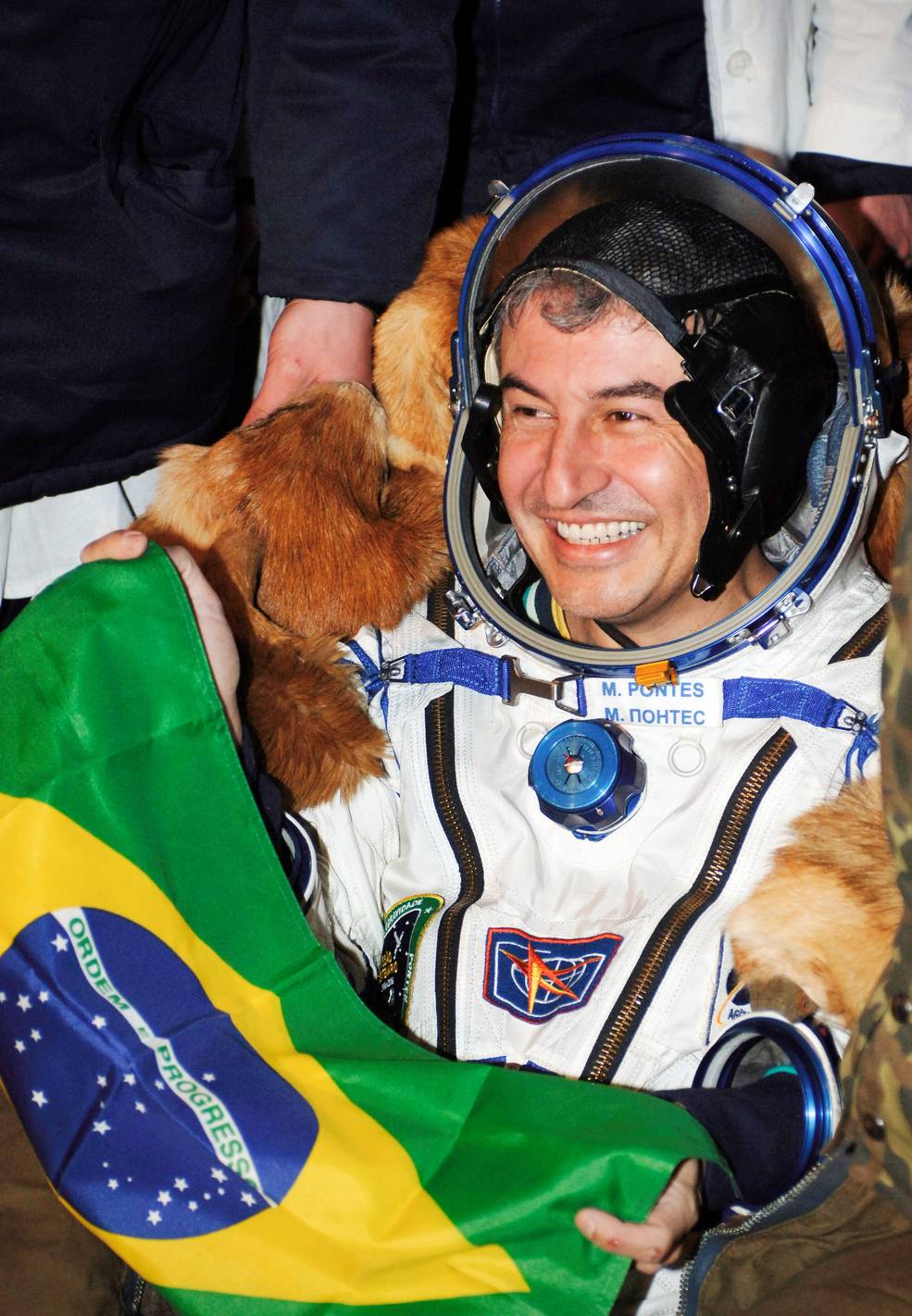
Left: Pontes working in the Zvezda module. Middle: Pontes working in the Destiny module. Right: Pontes shortly after landing back on Earth.
Space Adventures, Inc., arranged the next SFP mission, that of Iranian-born and naturalized American citizen Anousheh Ansari. She along with her husband and his brother established the Ansari X-Prize awarded to the first non-governmental organization to launch a reusable crewed spacecraft into space twice within two weeks. Ansari launched aboard the Soyuz TMA-9 spacecraft on Sep. 18, 2006, along with the ISS Expedition 14 crew of Michael E. Lopez-Alegria and Mikhail V. Tyurin. Ansari spent nine days aboard ISS, conducting four ESA-sponsored biomedical experiments and publishing a weblog of her daily activities. She returned to Earth on Sep. 29 aboard Soyuz TMA-8 with the Expedition 13 crew of Vinogradov and Williams.
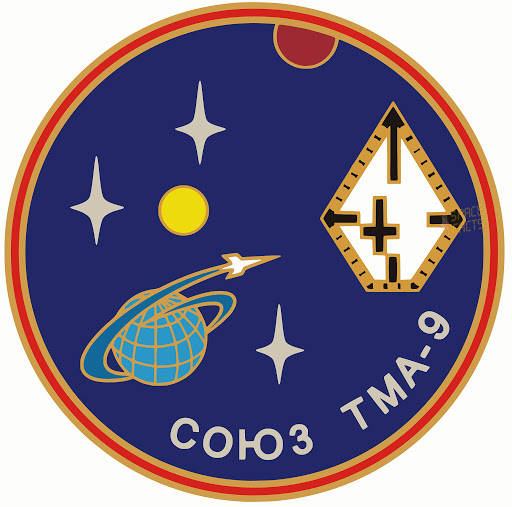
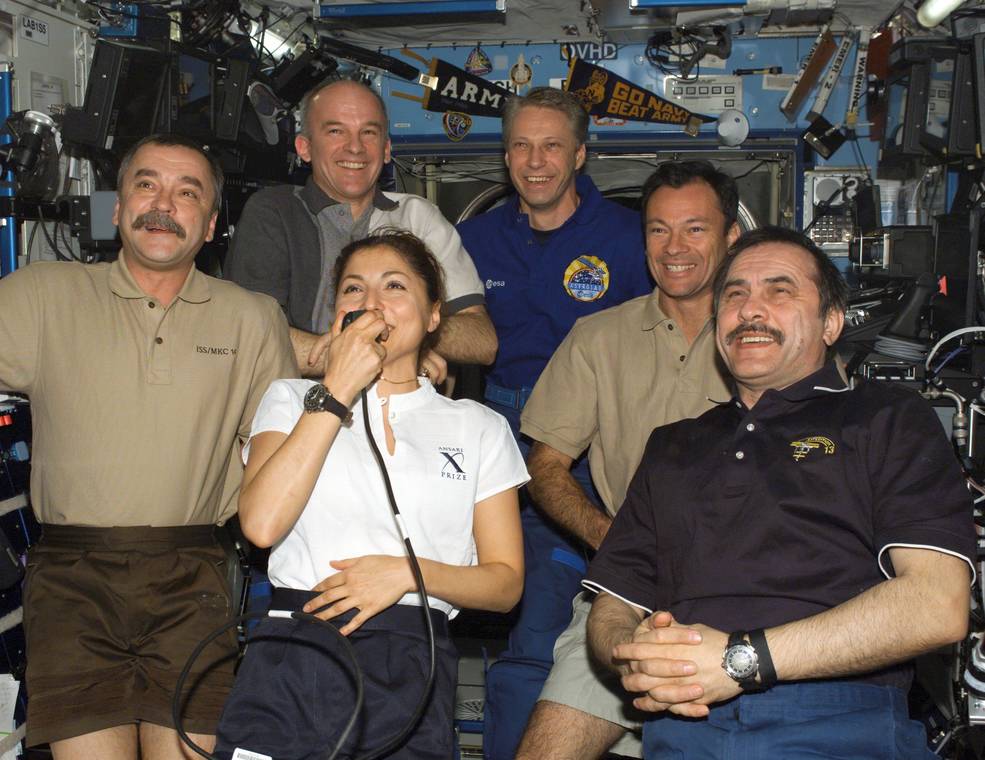
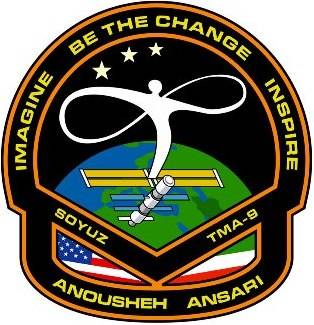
Left: Soyuz TMA-9 mission patch. Middle: SFP Ansari (front row, middle) with her Expedition 13 and 14 crewmates. Right: Ansari’s mission patch.
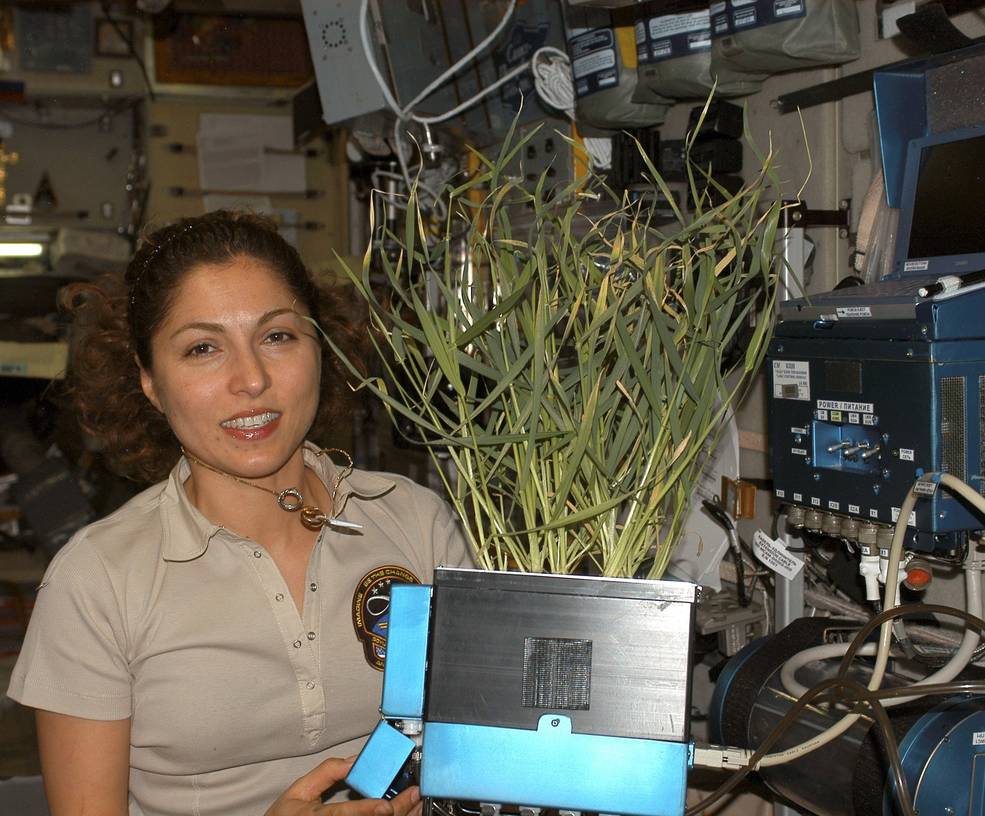
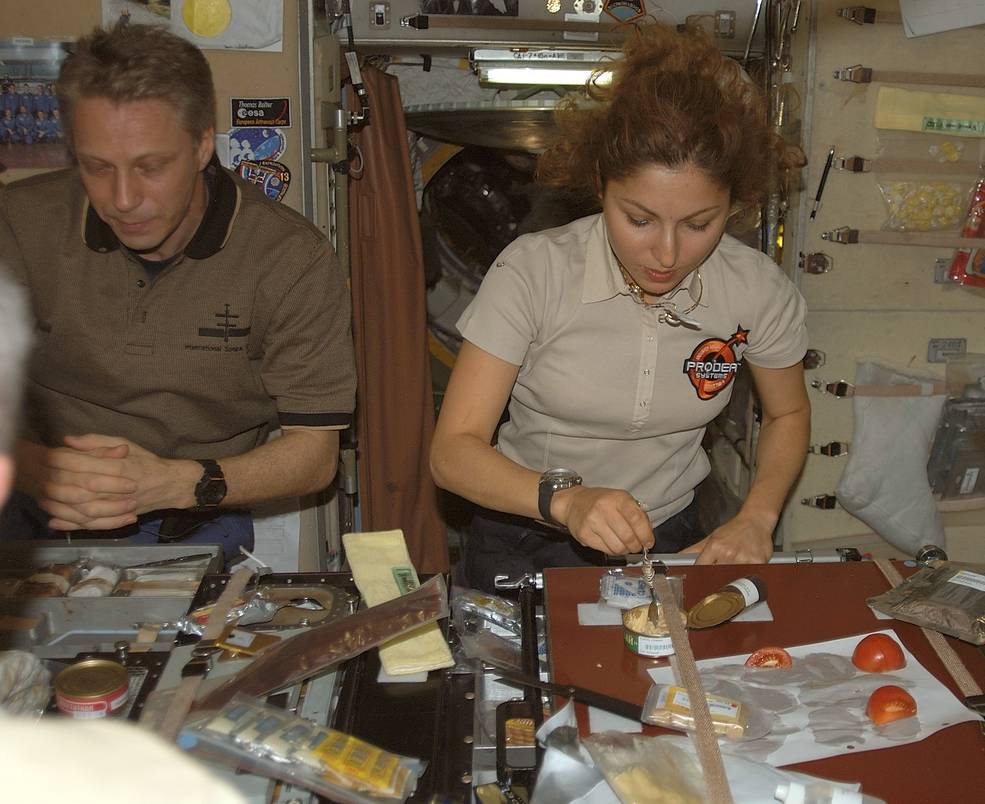
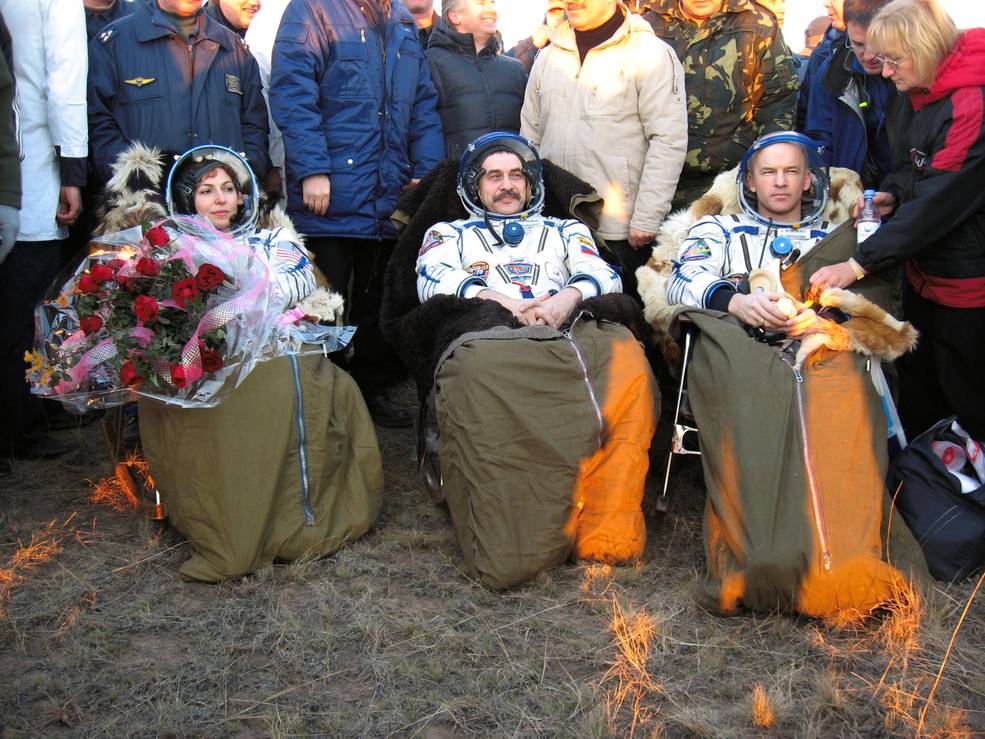
Left: Ansari holding a plant grown in the Lada greenhouse. Middle: Ansari (at right) during mealtime aboard ISS. Right: Ansari (at left) with crewmates Vinogradov and Williams shortly after landing.
Hungarian-born American citizen Charles Simonyi, a software architect and philanthropist, made his first trip to space on April 7, 2007, when he launched aboard Soyuz TMA-10 with Expedition 15 cosmonauts Fyodor N. Yurchikhin and Oleg V. Kotov. The trio docked with ISS two days later, and Simonyi spent the next 12 days conducting science and education experiments. A licensed amateur radio operator, he made contacts with schools in the United States and Hungary. Simonyi returned to Earth on April 21 aboard Soyuz TMA-9 with Expedition 14 crewmembers Lopez-Alegria and Tyurin.
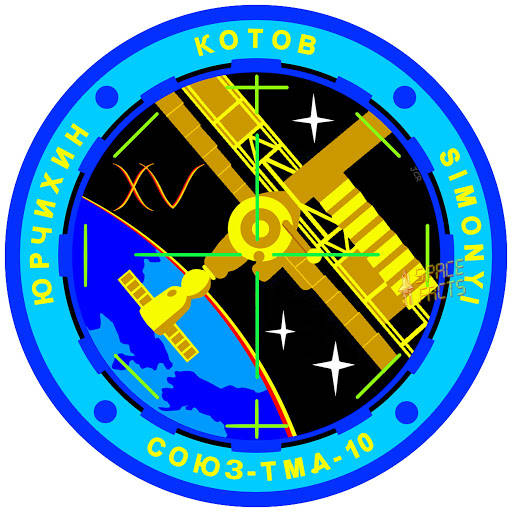
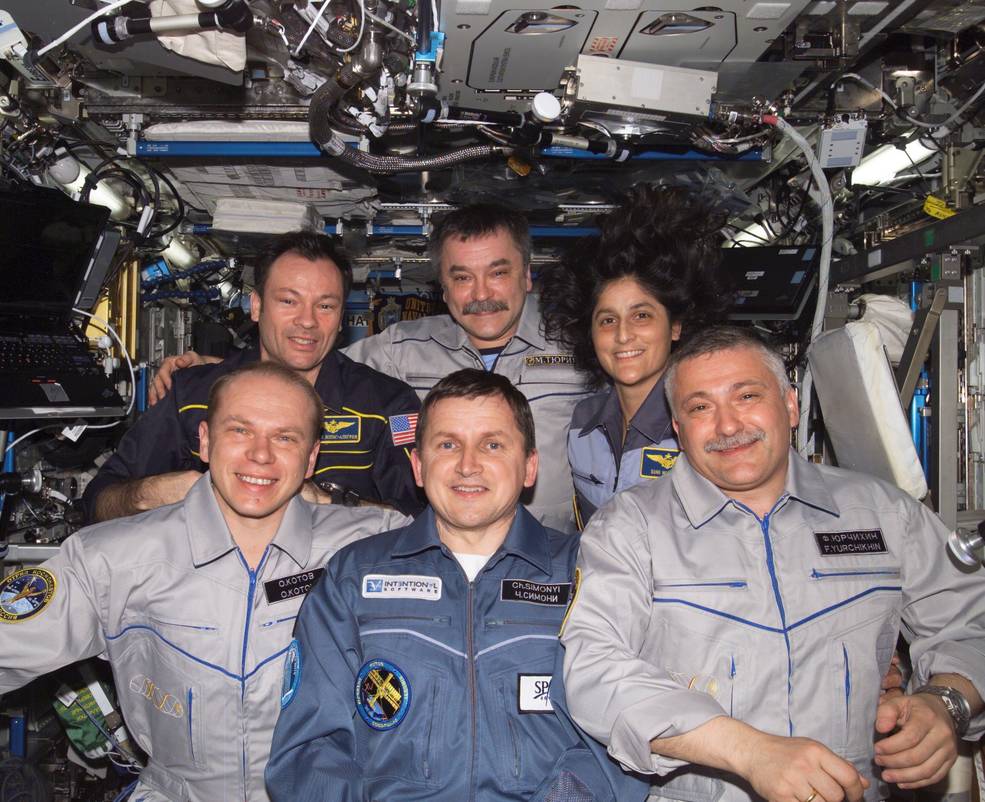
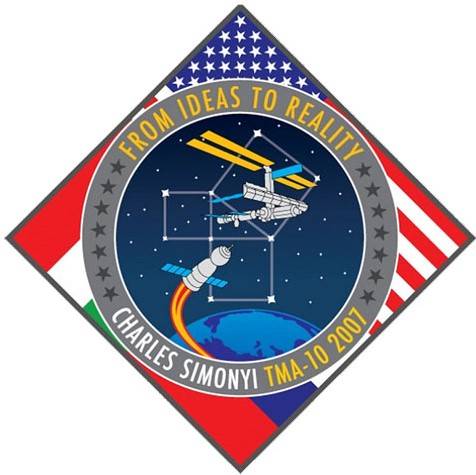
Left: Soyuz TMA-10 patch. Middle: SFP Simonyi (front row, center) with his Expedition 14 and 15 crewmates. Right: Simonyi’s mission patch.
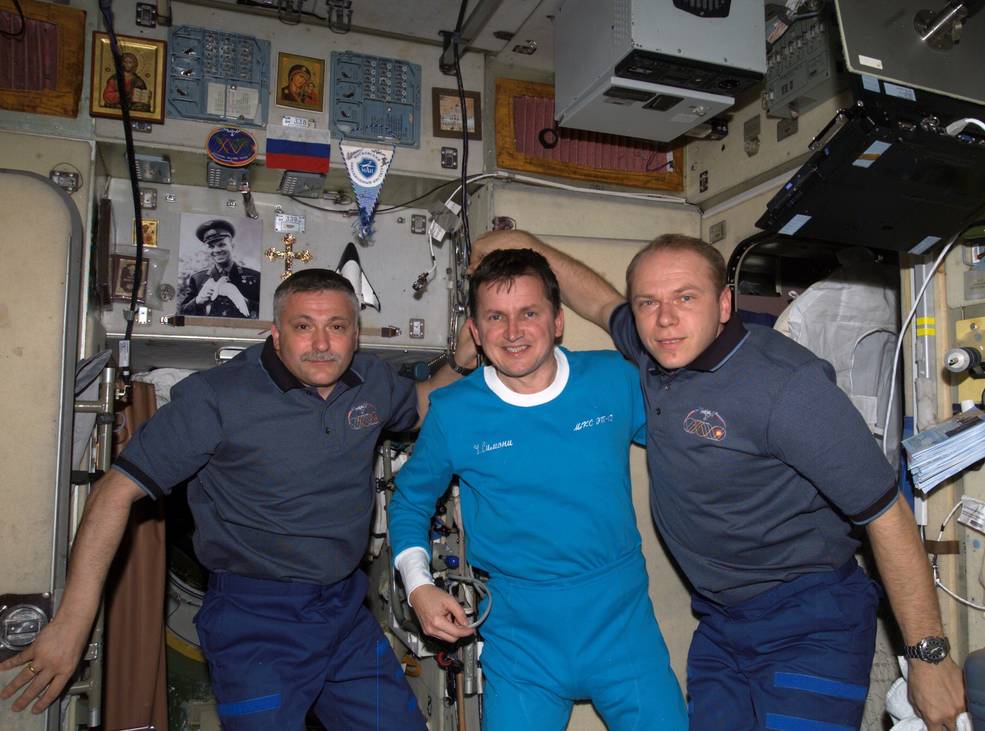
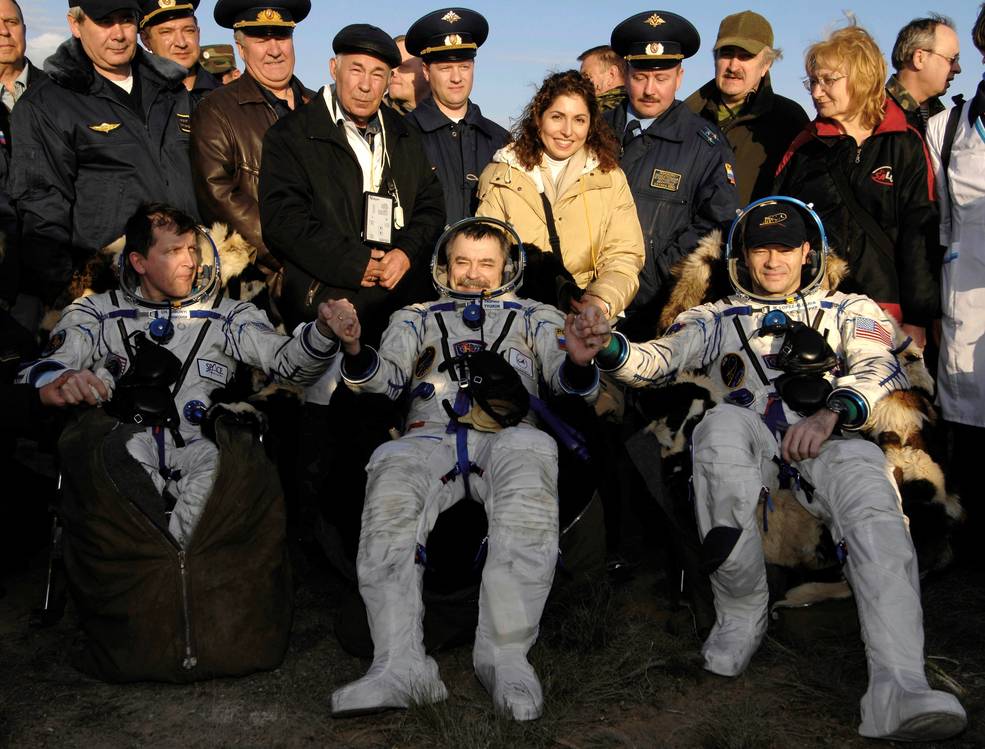
Left: Simonyi (center) with his Expedition 15 crewmates helping him to prepare for his return. Right: Simonyi (at left) shortly after landing with his Expedition 14 crewmates and former SFP Ansari (standing in tan coat).
An agreement between the governments of Malaysia and the Russian Federation resulted in the development of the Angkasawan (Malaysian for astronaut) Program to fly the first Malaysian citizen aboard ISS. Orthopedic surgeon Sheikh Muszaphar Shukor launched aboard Soyuz TMA-11 on Oct. 10, 2007, together with Expedition 16 crewmembers Peggy A. Whitson and Yuri I. Malenchenko. Shukor spent nine days aboard ISS conducting six life science experiments and education demonstrations. His mission coincided with the end of Ramadan and to celebrate Eid al-Fitr, Shukor shared some Malaysian satay with his crewmates. Shukor returned to Earth with the Expedition 15 crew of Kotov and Yurchikhin on Oct. 21.
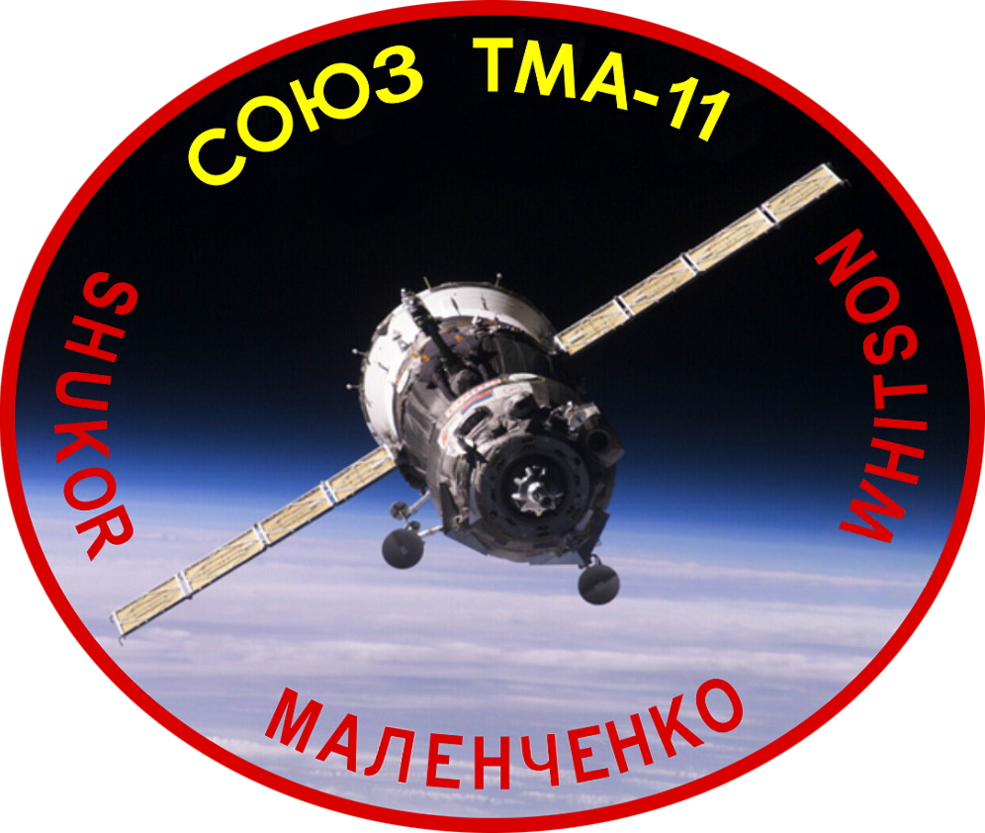
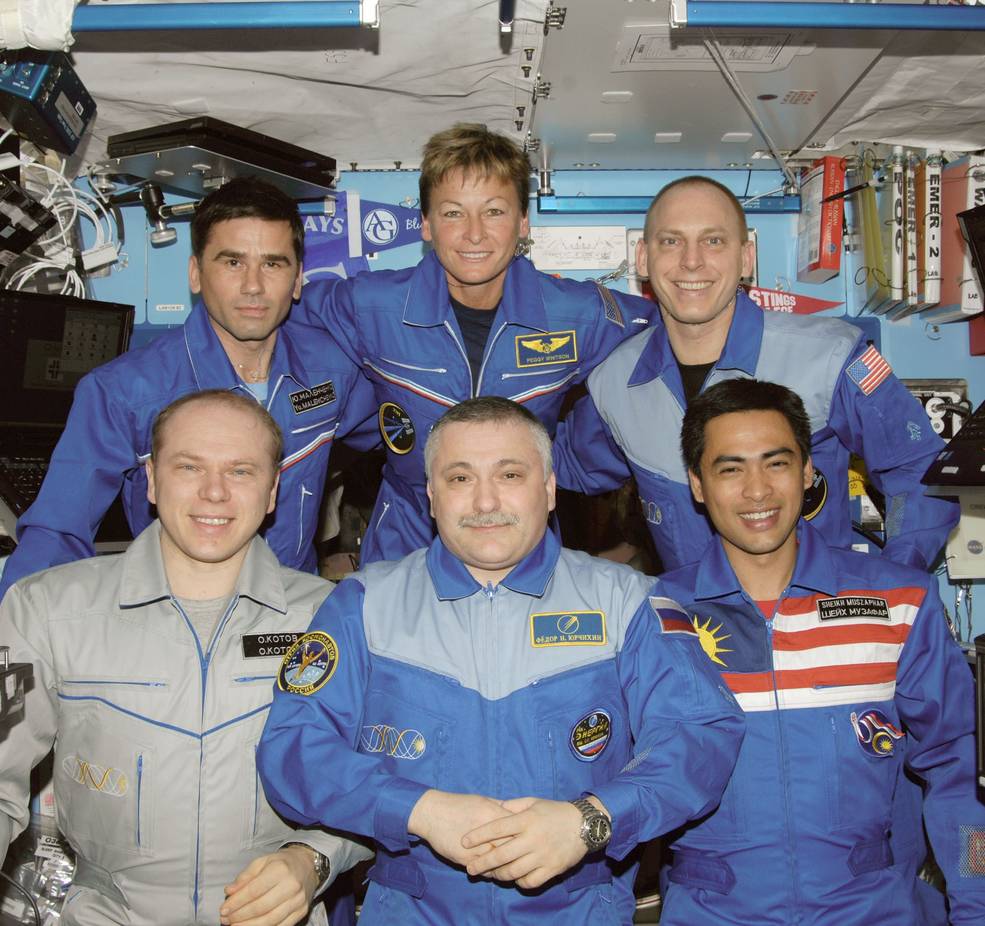
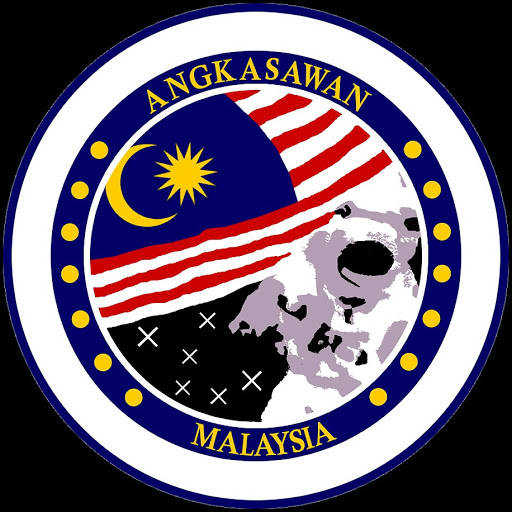
Left: Soyuz TMA-11 patch. Middle: Shukor (front row, at right) with his Expedition 15 and 16 crewmates. Right: Shukor’s Angkasawan mission patch.
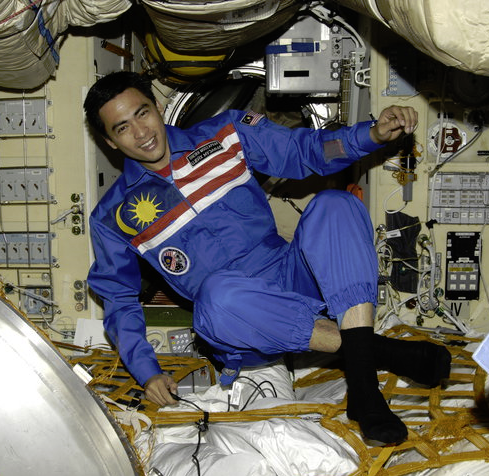
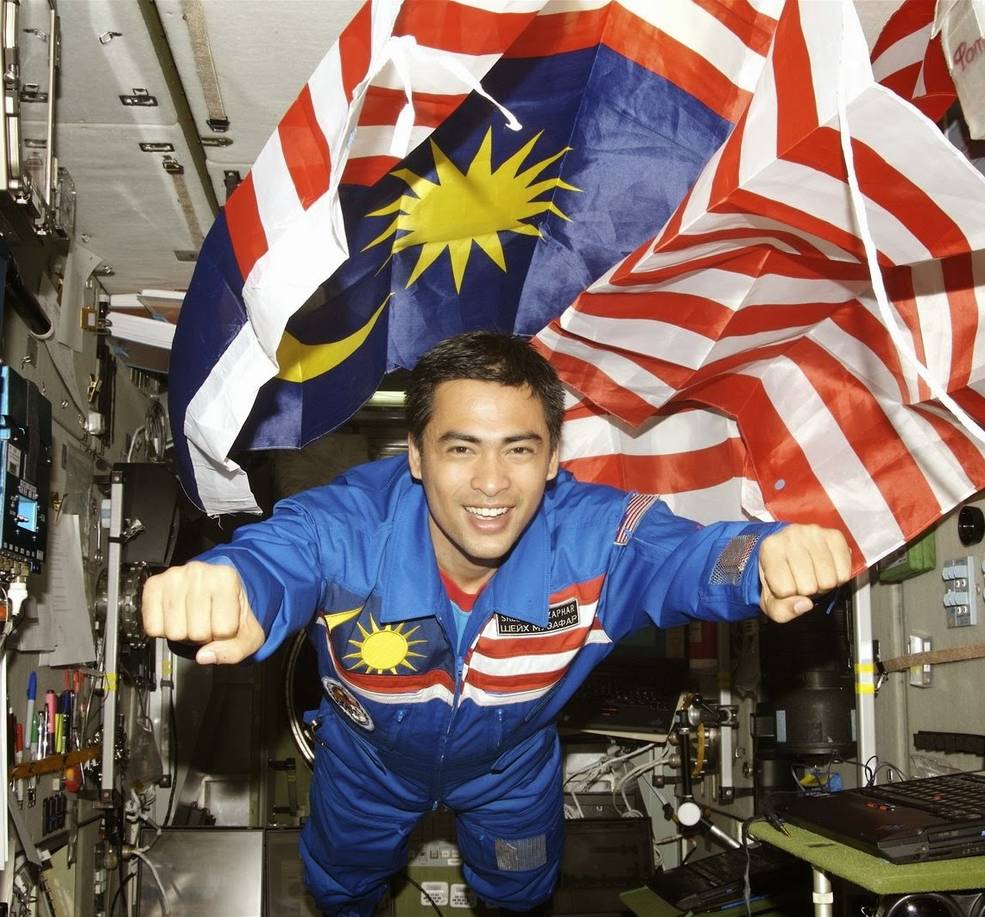
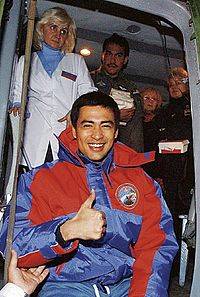
Left: Shukor in the Zarya module. Middle: Shukor floating through the Zvezda module. Right: Shukor exiting the recovery helicopter shortly after landing back on Earth.
An initiative by the government of South Korea to fly its first citizen in space resulted in the Korean Astronaut Program, a commercial agreement with the Russian Federation. Biotechnologist Yi So-yeon launched on April 8, 2008, with Expedition 17 cosmonauts Sergei A. Volkov and Oleg D. Kononenko aboard Soyuz TMA-12. During her nine-day stay aboard ISS, Yi conducted 18 life science experiments selected by the Korea Aerospace Research Institute and shared kimchi, a Korean staple, with her crewmates. She returned to Earth with Expedition 16 crewmembers Whitson and Malenchenko aboard Soyuz TMA-11, enduring up to 10 gs during the reentry as the spacecraft made an unplanned ballistic entry, landing 260 miles from the target area.
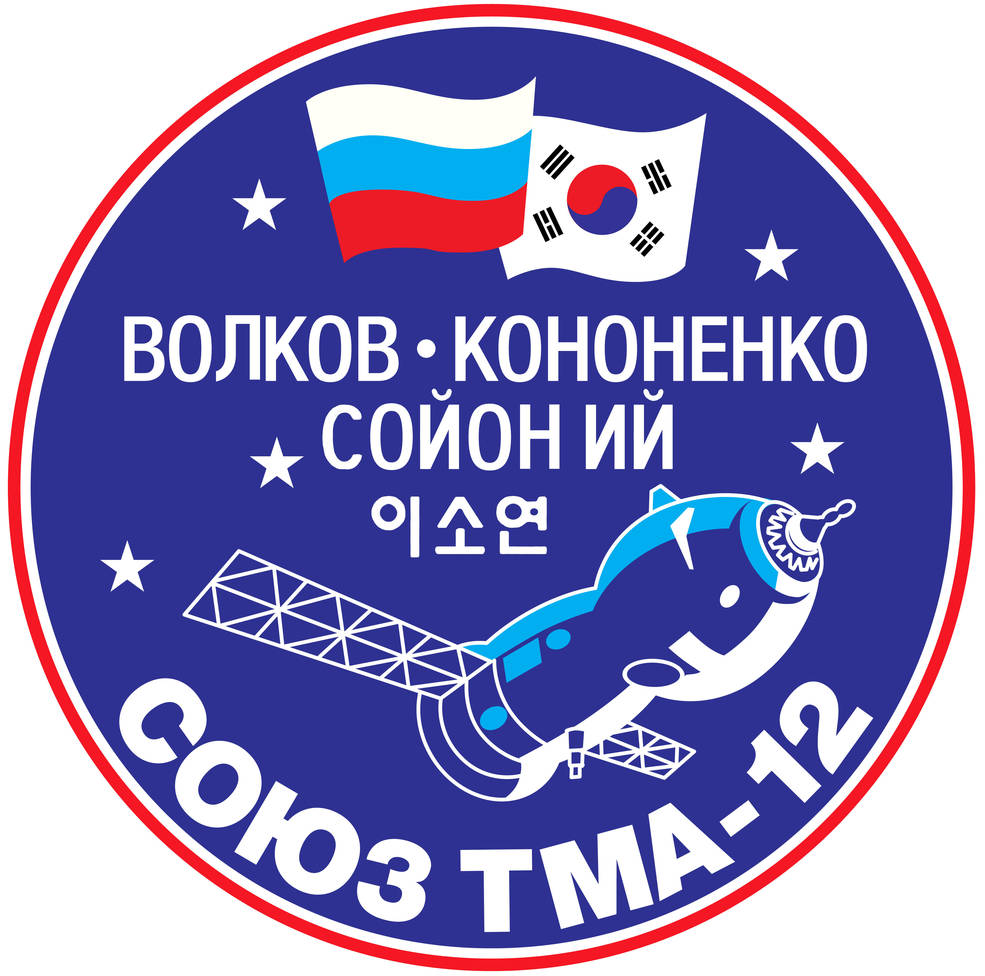
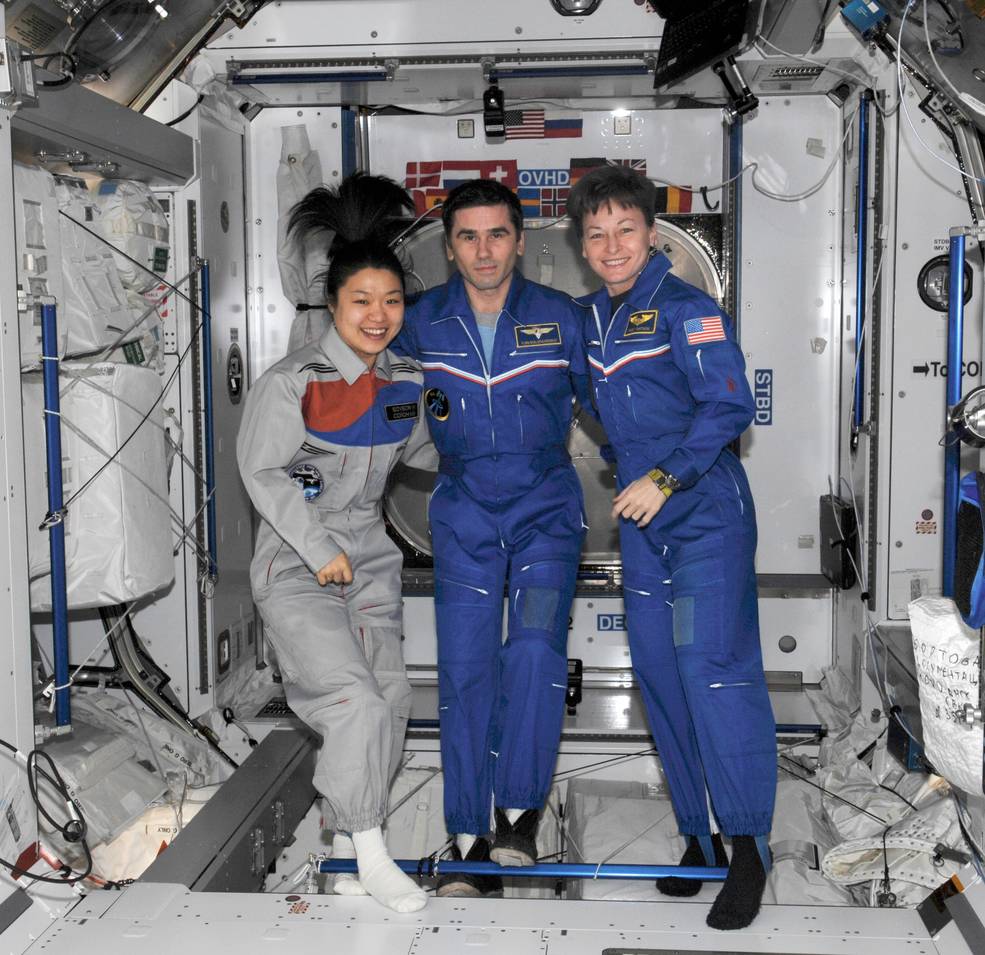
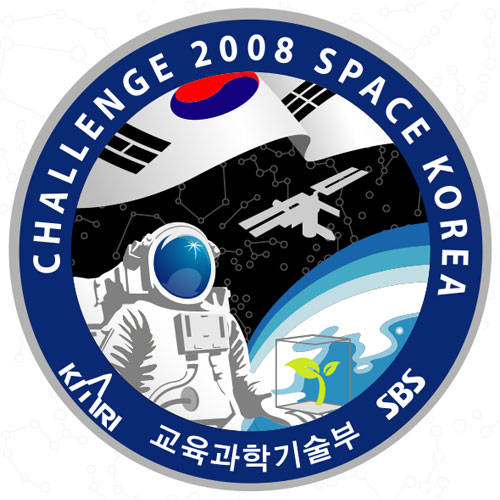
Left: Soyuz TMA-12 patch. Middle: SFP Yi with Expedition 16 crewmates Malenchenko and Whitson. Right: Yi’s mission patch.
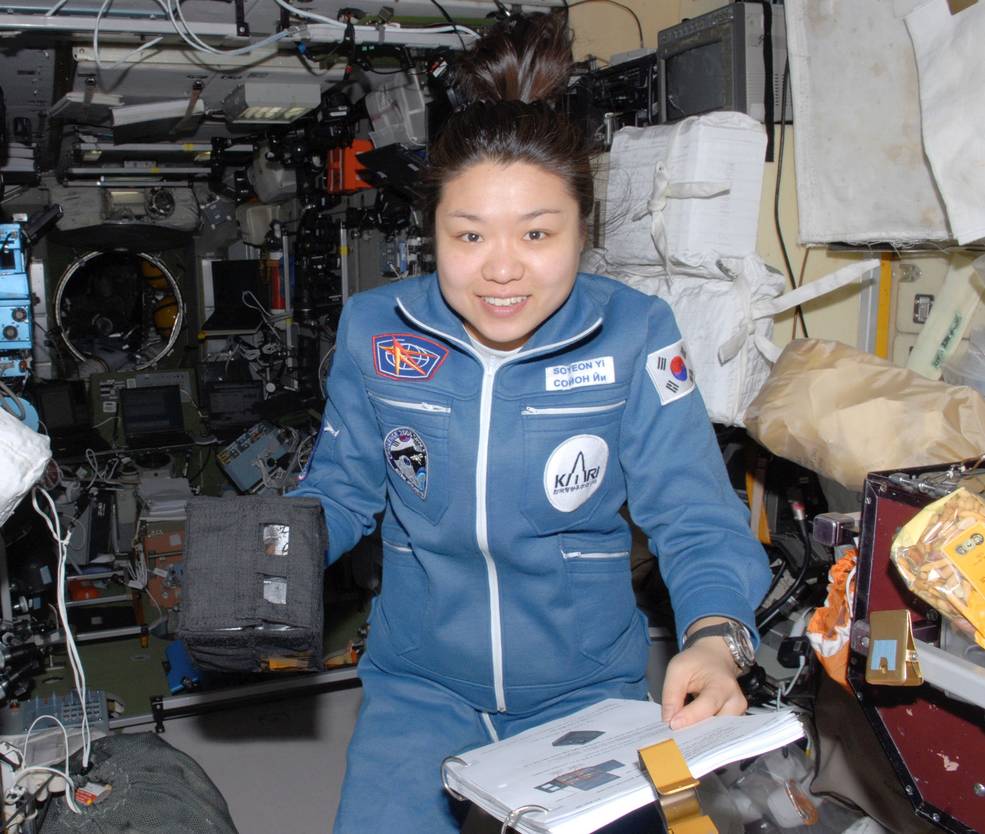
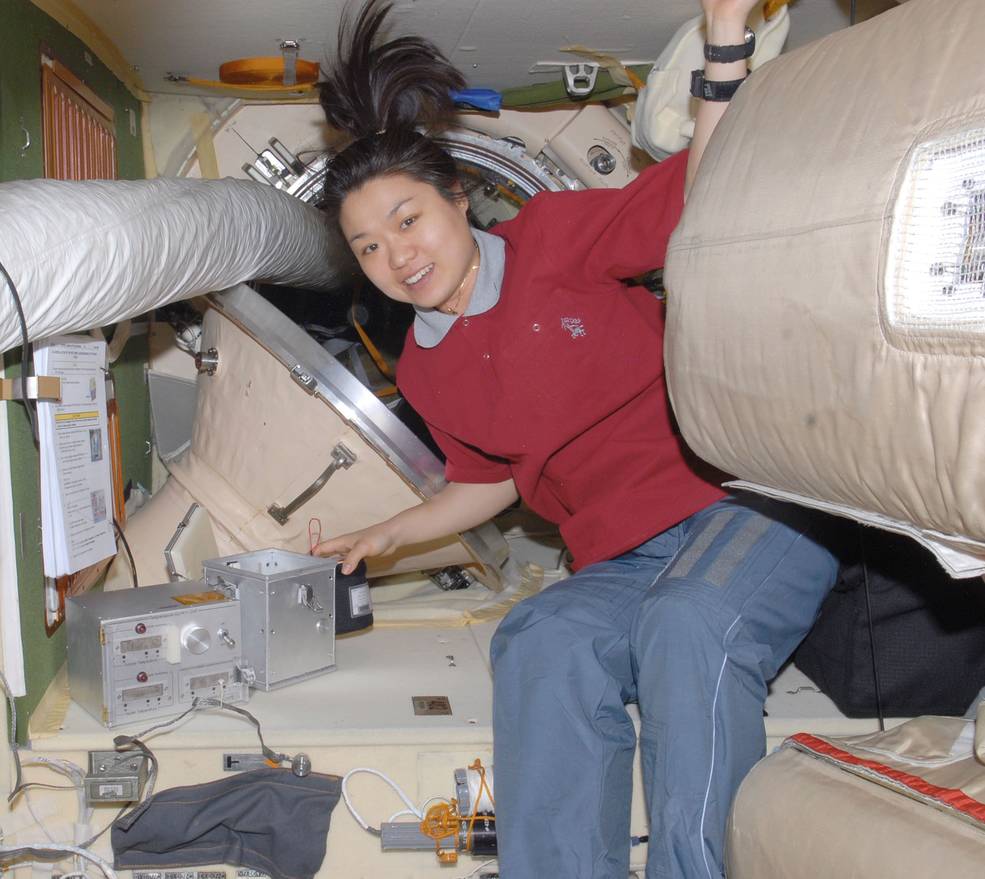
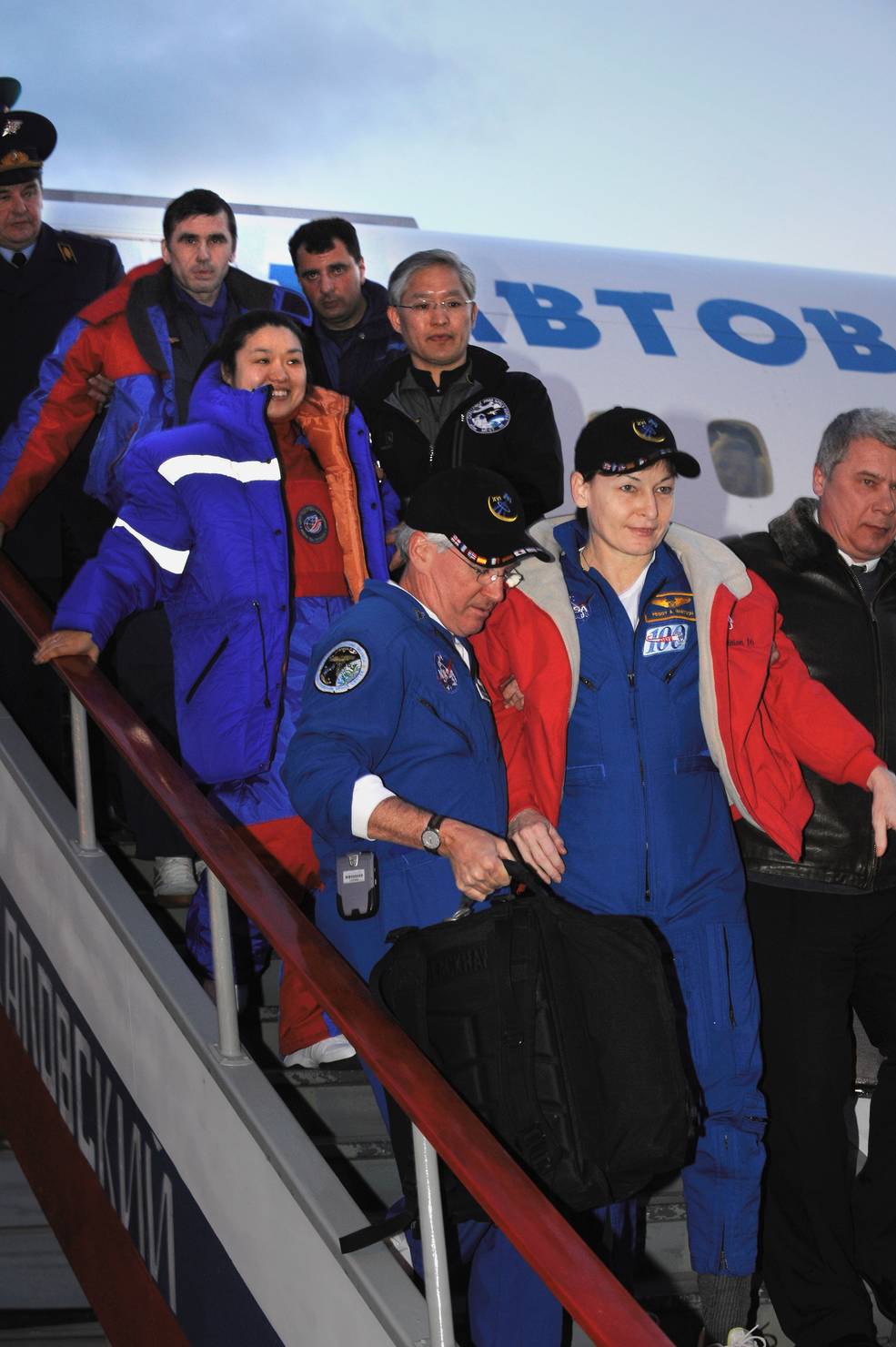
Left: Yi working on an experiment in the Zvezda module. Middle: Yi in the Pirs docking compartment. Right: Yi (in blue jacket) descending the steps from the aircraft upon her return to Star City.
With a lifelong dream to fly in space, American-British video game developer Richard A. Garriott was an early investor in Space Adventures, Inc. On Oct. 12, 2008, his dream came true when he launched aboard Soyuz TMA-13 as a SFP with Expedition 18 crewmembers E. Michael Fincke and Yuri V. Lonchakov. Garriott, son of Skylab and Shuttle astronaut Owen K. Garriott, became the first American second-generation space traveler and the second in the world, on the heels of Sergei Volkov, son of Russian cosmonaut Aleksandr A. Volkov, who was already aboard ISS. Garriott participated in education outreach activities during his 10-day stay on the station and photographed selected Earth targets. He returned to Earth on Oct. 24, with Expedition 17 cosmonauts Volkov and Kononenko. Garriott’s father welcomed him home at the landing site in Kazakhstan.
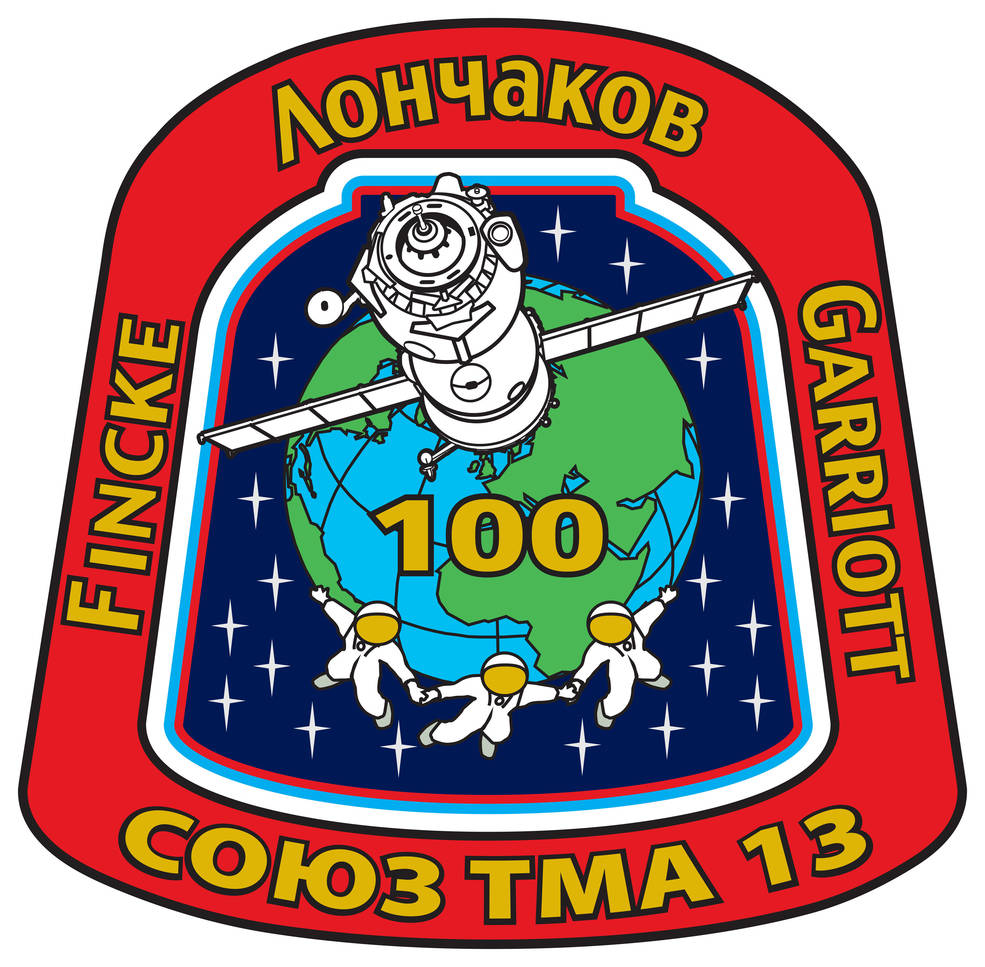
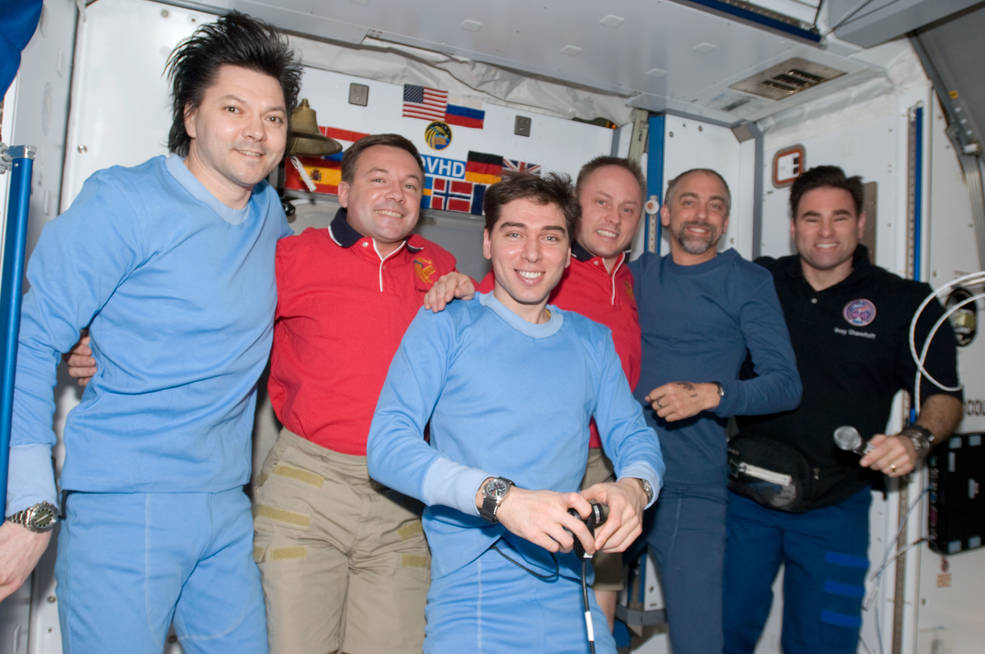
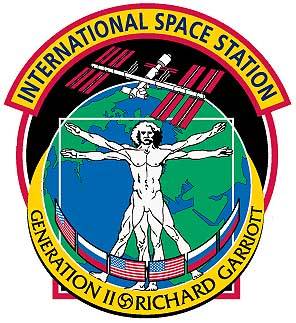
Left: Soyuz TMA-13 mission patch. Middle: SFP Garriott (second from right) with Expedition 17 and 18 crewmembers. Right: Garriott’s mission patch.

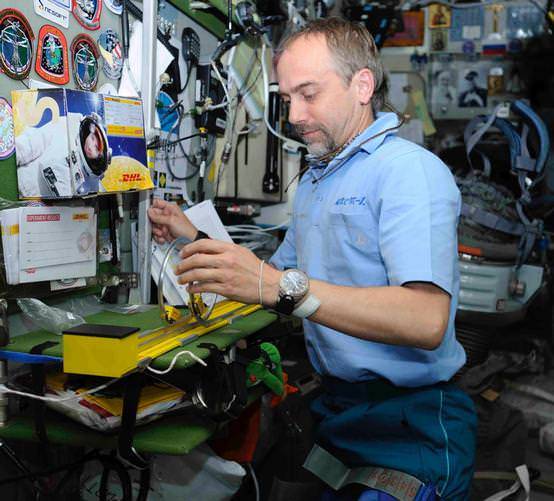
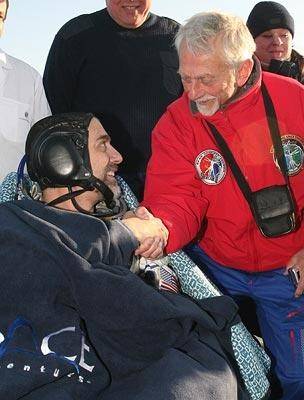
Left: Garriott (at right) with crewmates Chamitoff and Fincke in the Destiny module. Middle: Garriott working on an experiment in the Zvezda module. Right: Garriott soon after landing back on Earth being greeted by his father Owen.
Two years after his first flight, Simonyi returned to space on March 26, 2009, aboard Soyuz TMA-14 with Expedition 19 crewmembers Gennadi I. Padalka and Michael R. Barratt. He continued his amateur radio activities, communicating with schools across the United States and conducting several experiments. Simonyi returned to Earth April 8 with the Expedition 18 crew of Fincke and Lonchakov. To date, Simonyi remains the only SFP to have traveled to space more than once.
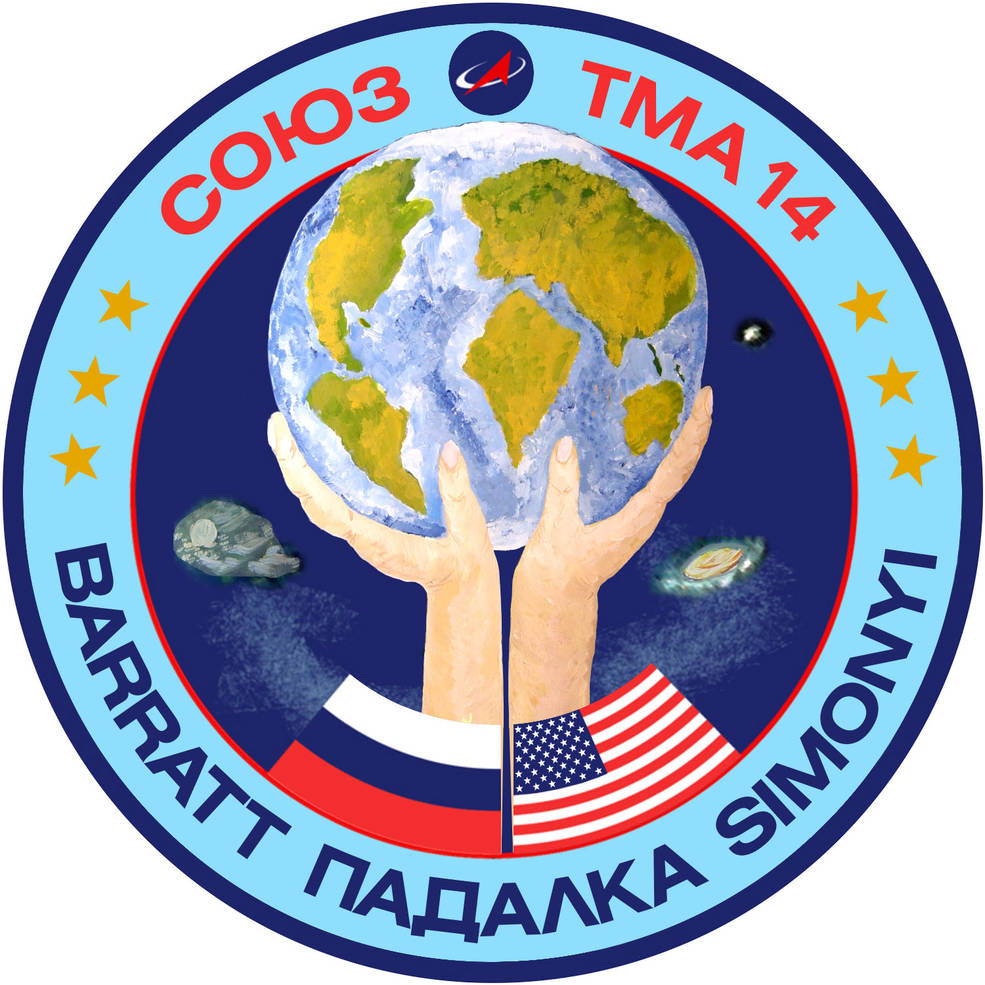
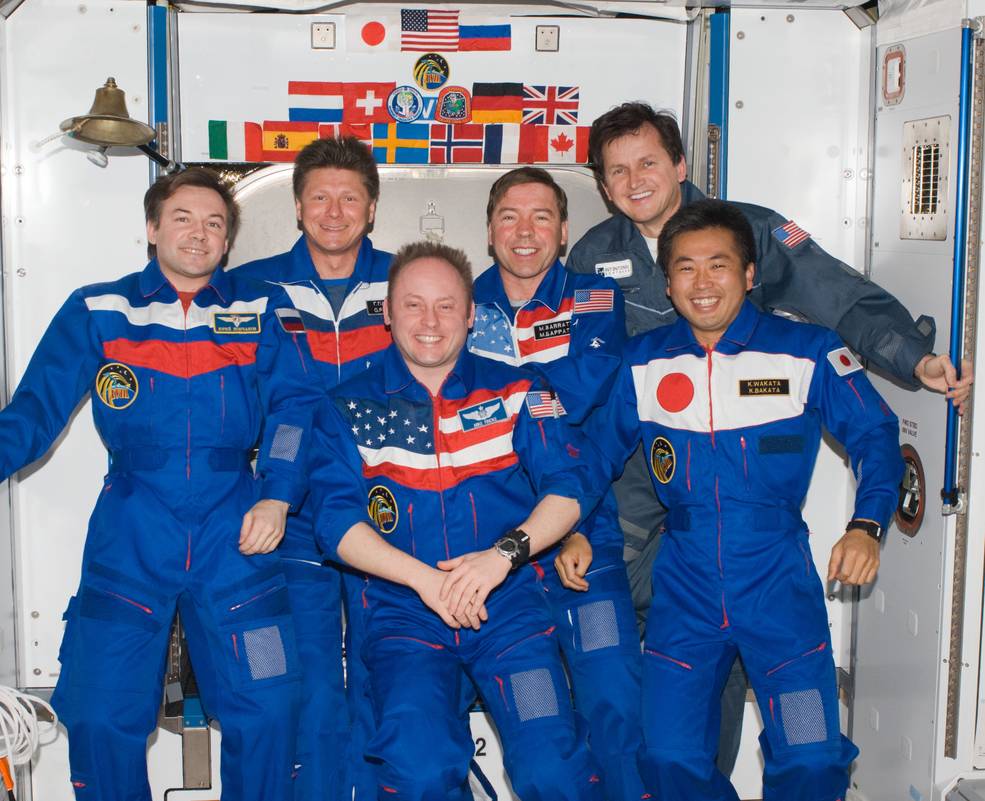
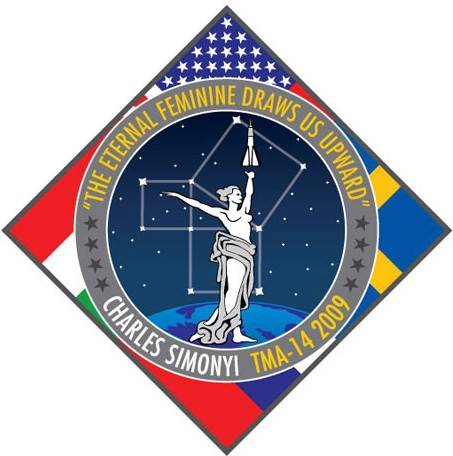
Left: Soyuz TMA-14 mission patch. Middle: SFP Simonyi (back row, far right) with his Expedition 18 and 19 crewmates. Right: Simonyi’s patch for his second mission.
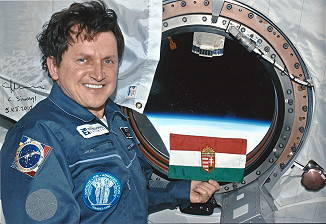
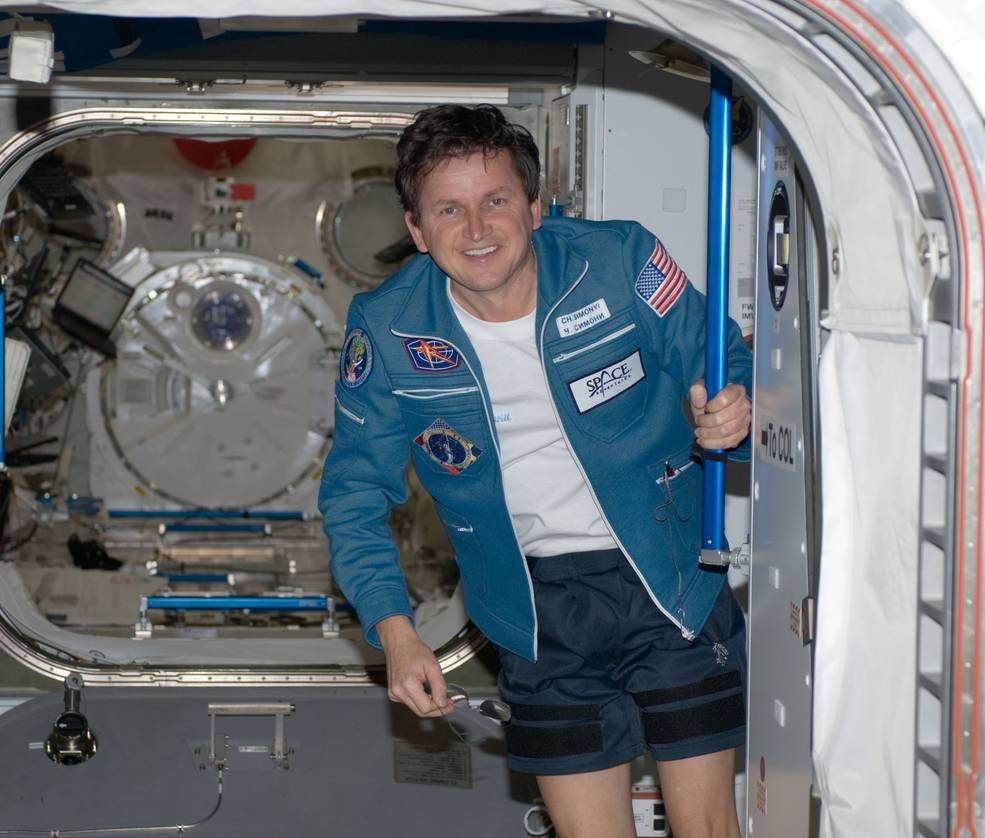
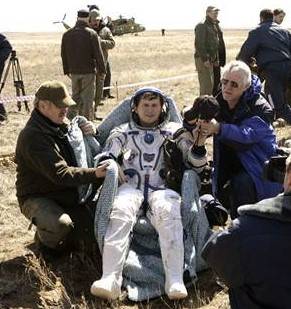
Left: Simonyi displaying a Hungarian flag in the Japanese Kibo module. Middle: Simonyi in the Harmony Node 2 module. Right: Simonyi shortly after landing back on Earth.
Canadian businessman and co-founder of Cirque du Soleil Guy Laliberté completed the final SFP mission sponsored by Space Adventures, Inc. He launched aboard Soyuz TMA-16 on Sep. 30, 2009, along with Expedition 21 crewmembers Jeffrey N. Williams and Maxim V. Surayev. Laliberté dedicated his 11-day flight to raising awareness of water issues facing humankind, describing it as the first poetic social space mission. He took photographs of the Earth that he later published in a book. Laliberté returned to Earth on Oct. 11 aboard Soyuz TMA-15, accompanied by Expedition 20 crewmembers Padalka and Barratt.
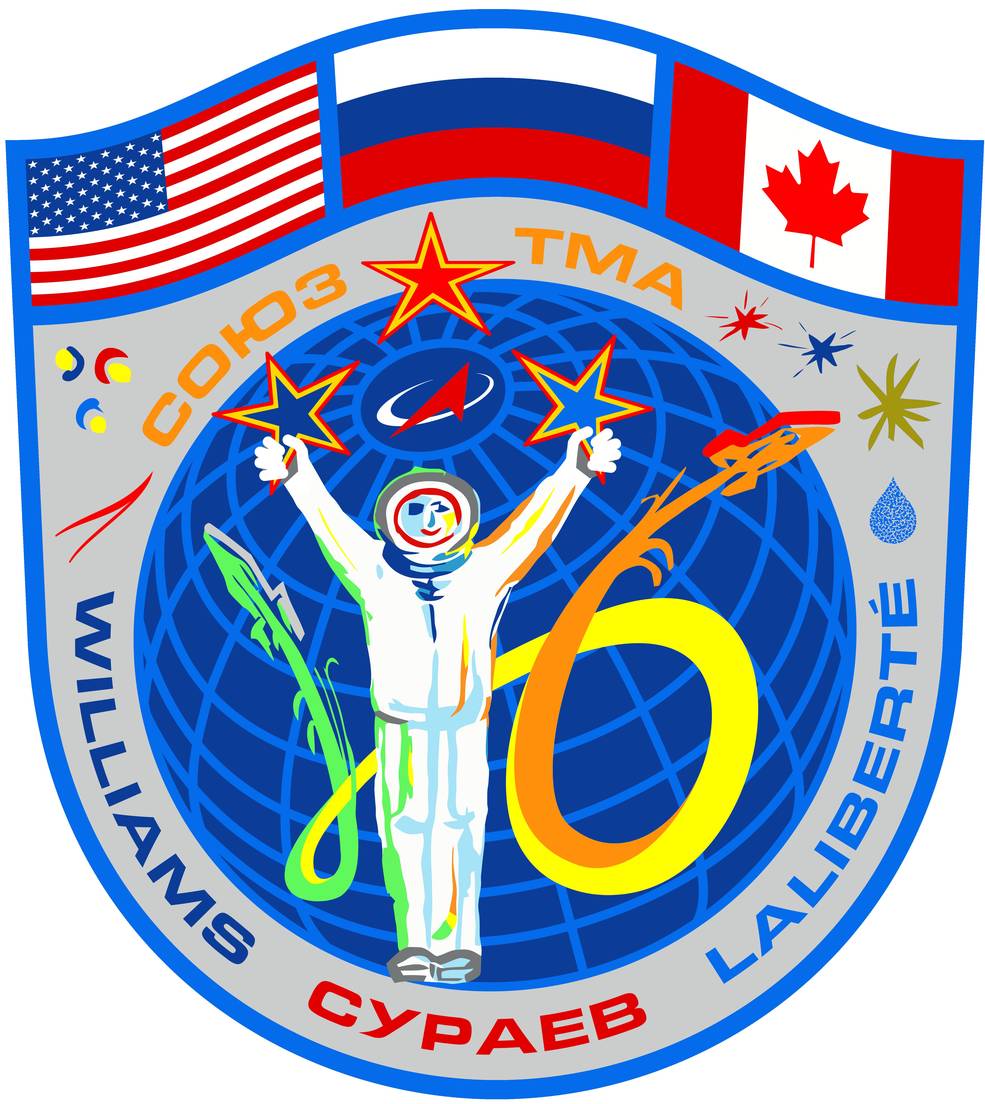
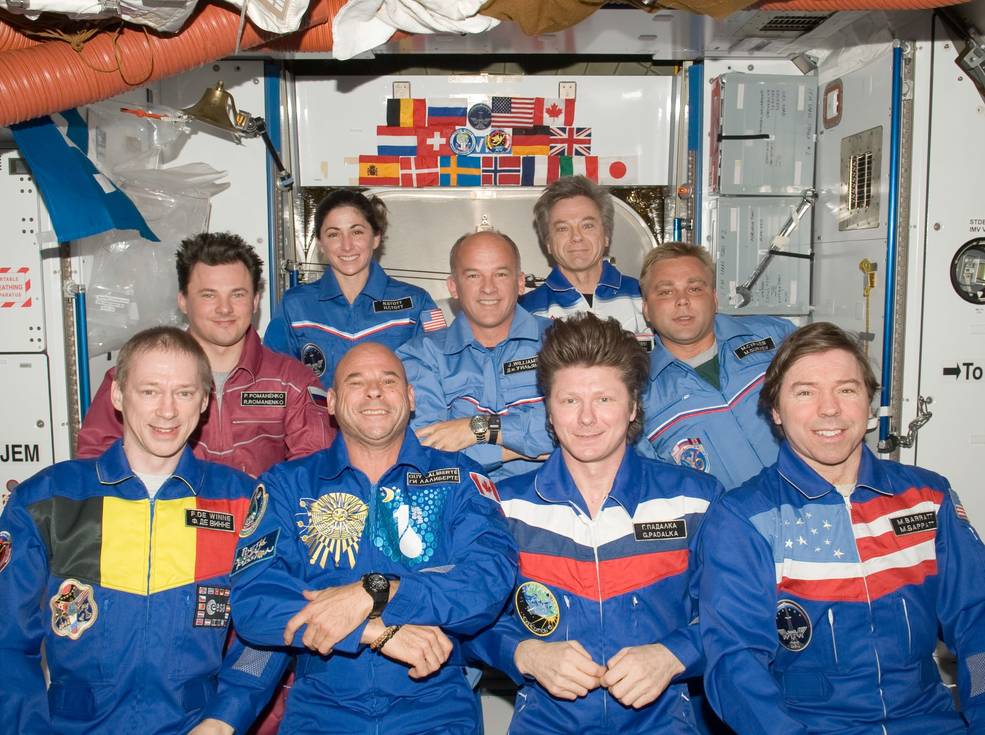
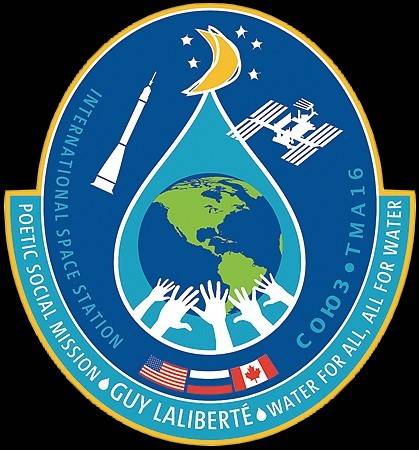
Left: Soyuz TMA-16 mission patch. Middle: SFP Laliberté (front row, second from left) with the crews of Expedition 20 and 21. Right: Laliberté’s mission patch.
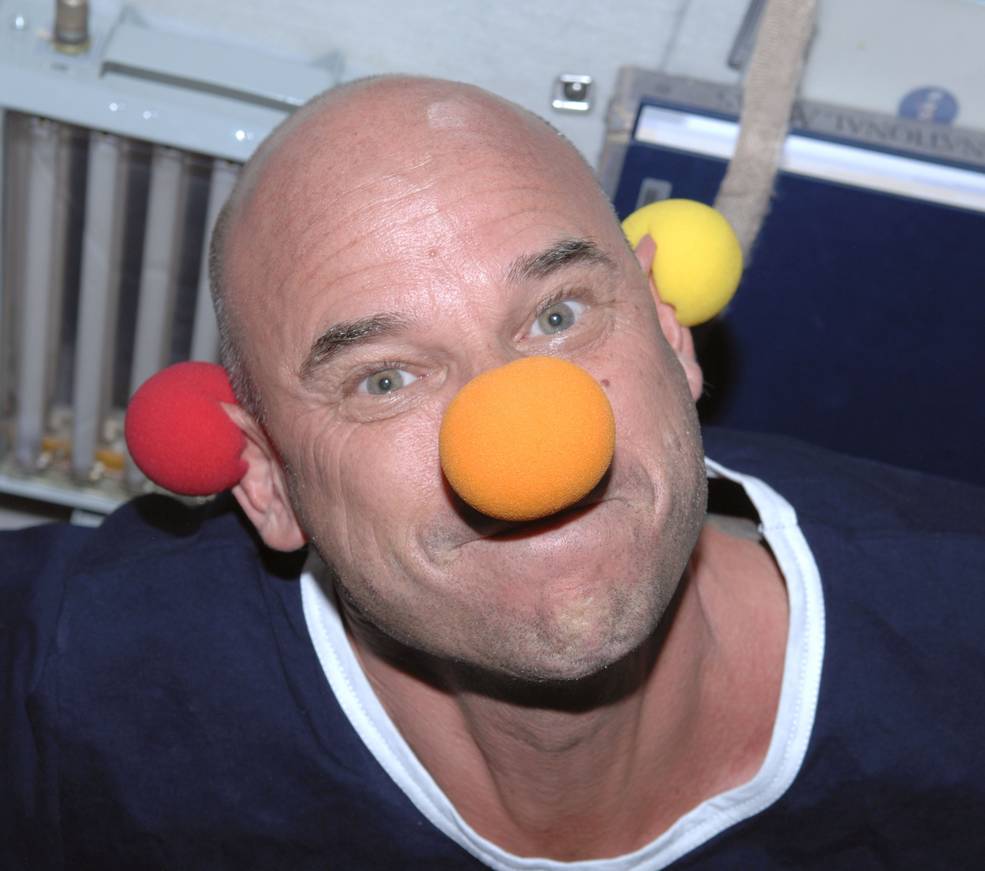
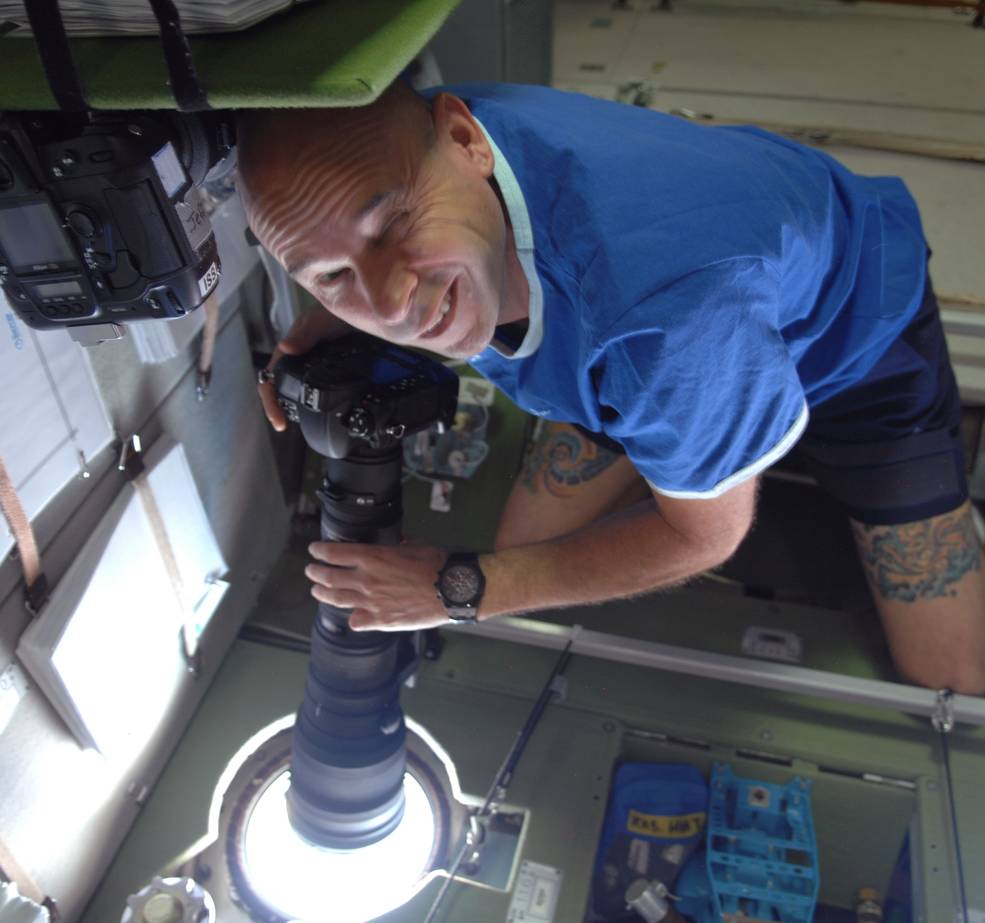
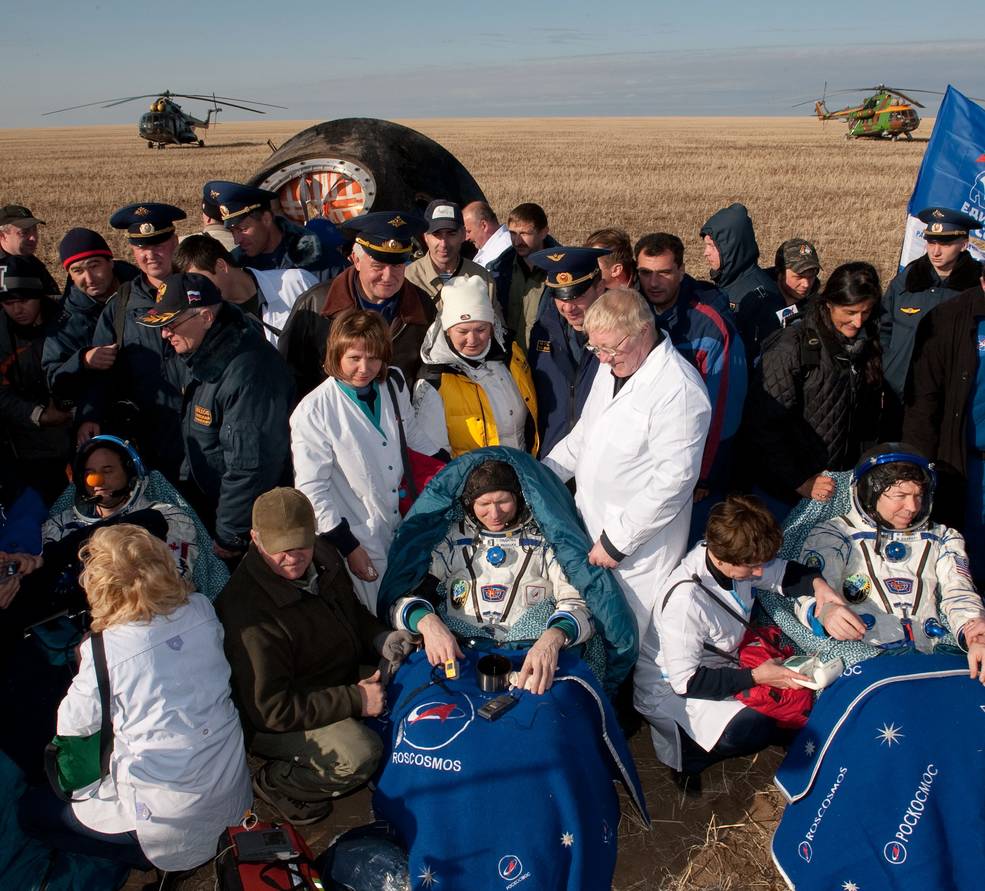
Left: Laliberté clowning around. Middle: Laliberté taking Earth observation photographs from the Zvezda module’s window. Right: Laliberté (at left) shortly after landing back on Earth.
The expansion of the crew complement aboard ISS from three to six crewmembers in 2009 resulted in all subsequent crew rotations occurring via Soyuz vehicles, eliminating the third seat used previously by SFPs. The ensuing 10-year hiatus in SFP missions ended in 2019, owing to an unusual crew rotation made possible by NASA’s desire to fly astronauts for missions longer than six months. This direct handover crew rotation resulted in nine people residing aboard ISS for a short time. A commercial agreement between the governments of the United Arab Emirates (UAE) and the Russian Federation resulted in the flight of the first Emirati citizen in space. On Sep. 25, 2019, UAE Air Force pilot Hazzaa Al-Mansoori launched aboard Soyuz MS-15 together with Expedition 61 crewmembers Oleg I. Skripochka and Jessica U. Meir. During his eight days aboard ISS, Al-Mansoori conducted 15 experiments created by school students, conducted Earth observations and demonstrated elements of Arabic culture including clothing and food. He returned to Earth on Oct. 3 aboard Soyuz MS-12 together with Expedition 60 crewmembers Aleksei N. Ovchinin and Nicholas T. Hague.
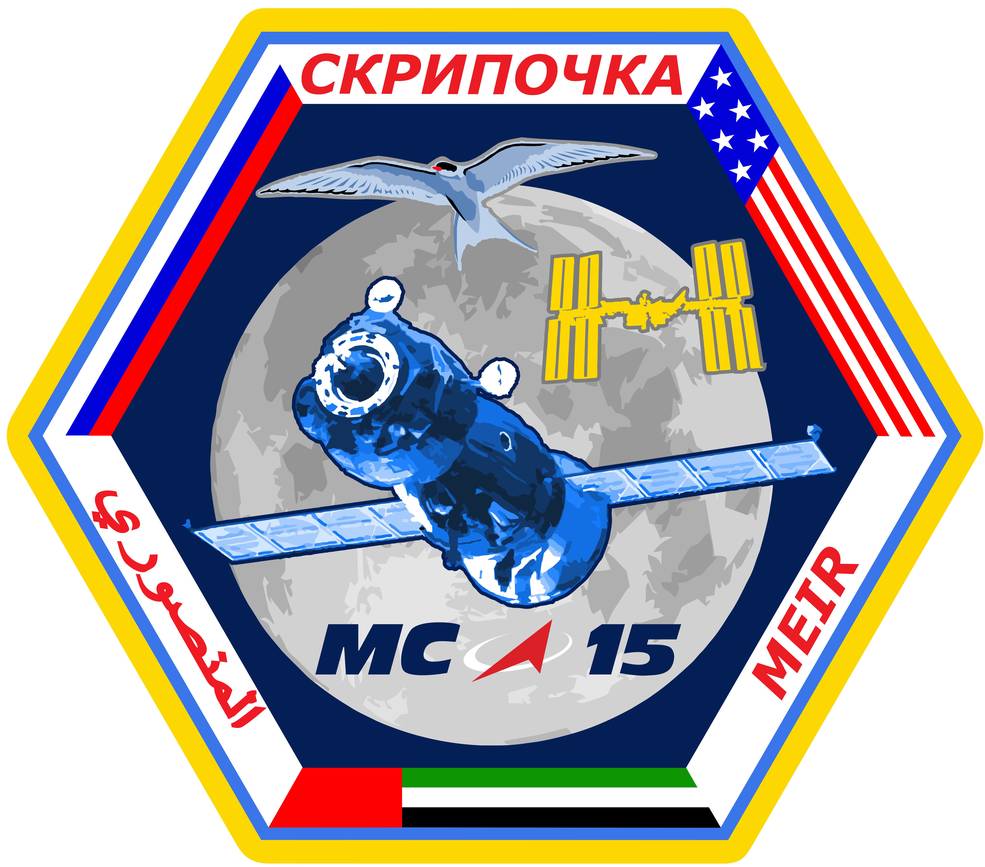
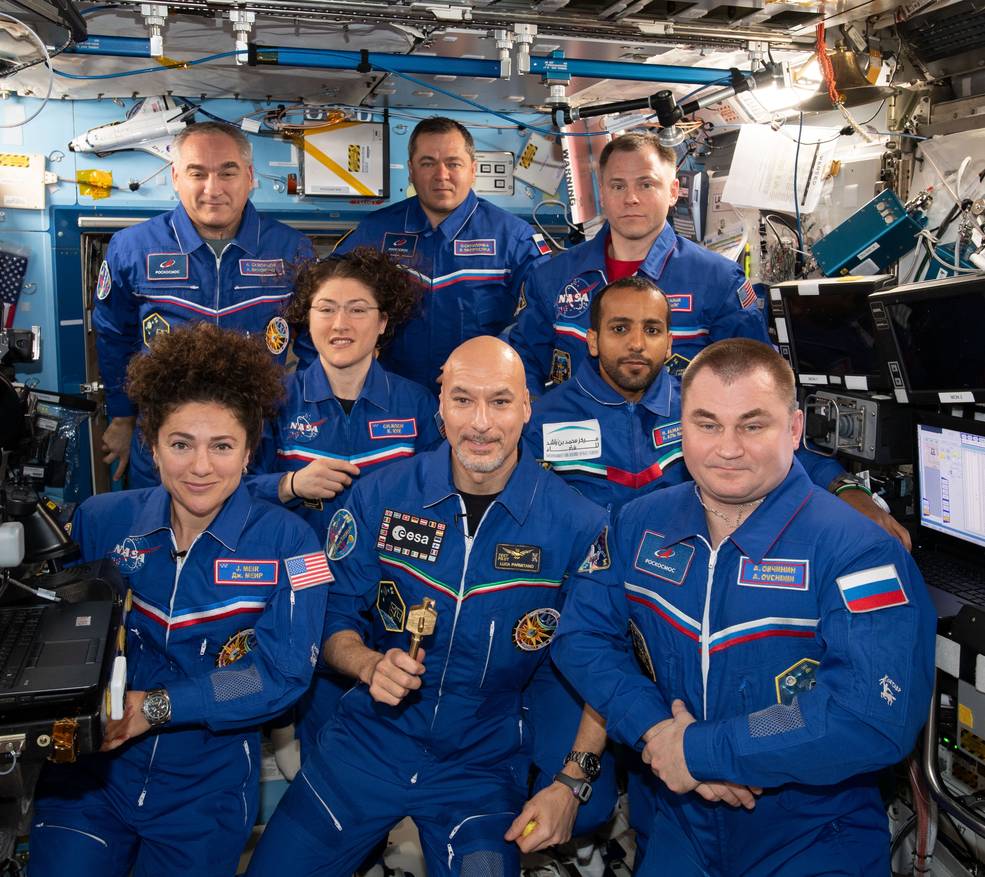
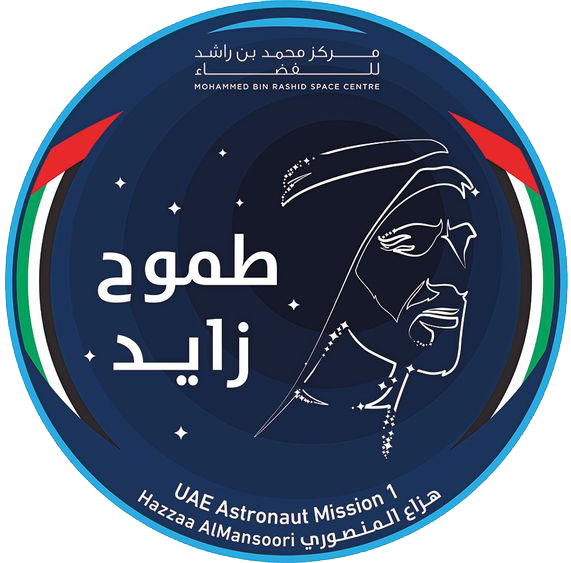
Left: Soyuz MS-15 mission patch. Middle: SFP Al Mansoori (second row, at right) with his Expedition 60 and 61 crewmates. Right: Al Mansoori’s mission patch.
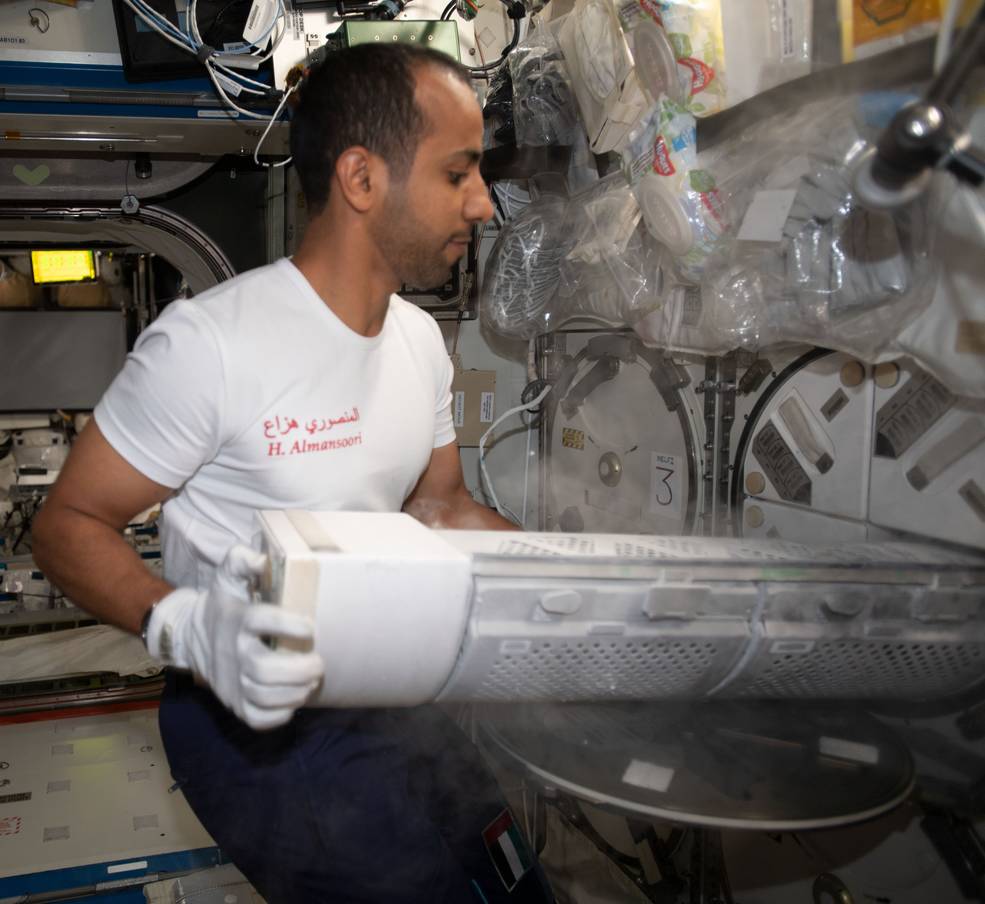
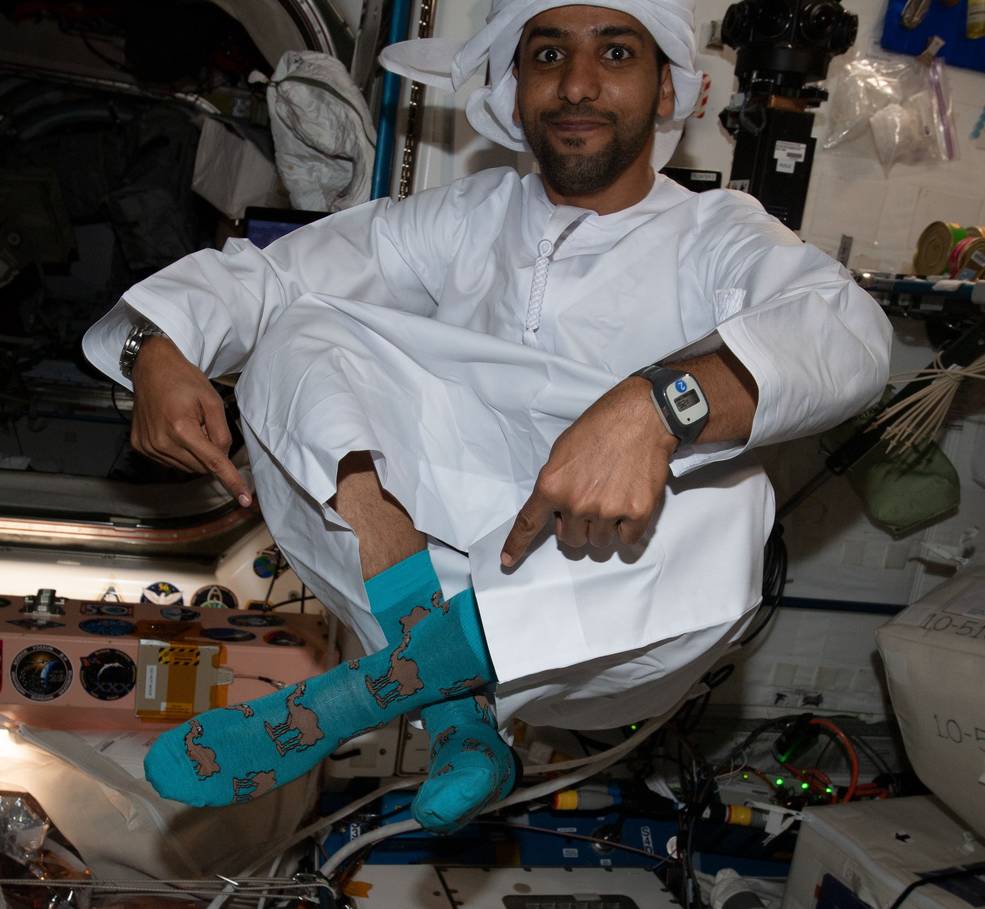
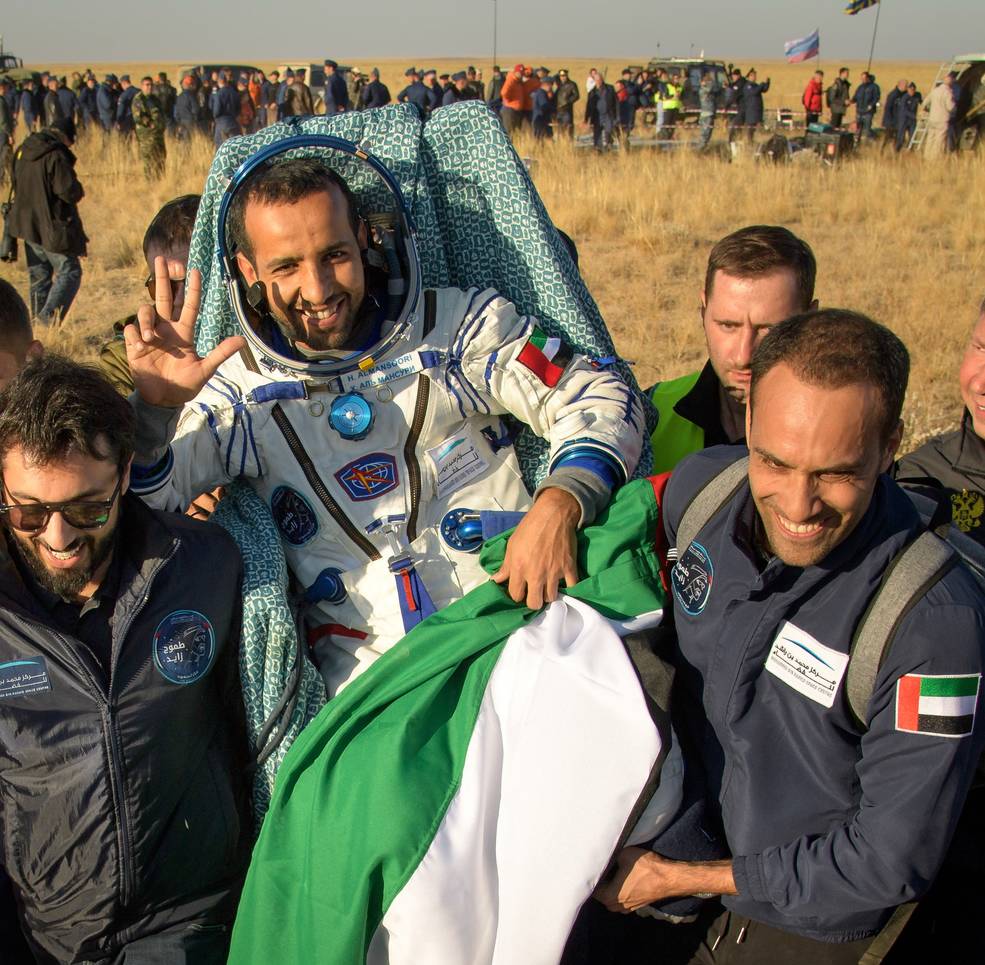
Left: Al Mansoori placing saliva samples into an onboard freezer. Middle: Al Mansoori dressed in traditional Arabic dress and sporting camel socks. Right: Al Mansoori being carried from the Soyuz spacecraft to the medical tent shortly after returning back to Earth.
In 2019, in its continuing efforts to stimulate a low Earth orbit economy, NASA announced the opportunity for private astronauts to carry out missions of up to 30 days aboard ISS, possibly beginning as early as late 2021. These paying customers will take advantage of unused seats aboard Space Exploration Corporation’s (SpaceX) Crew Dragon and Boeing Starliner Commercial Crew spacecraft. NASA anticipates up to two flight opportunities per year. While aboard ISS, the private astronauts will conduct approved scientific, commercial and marketing activities.



























